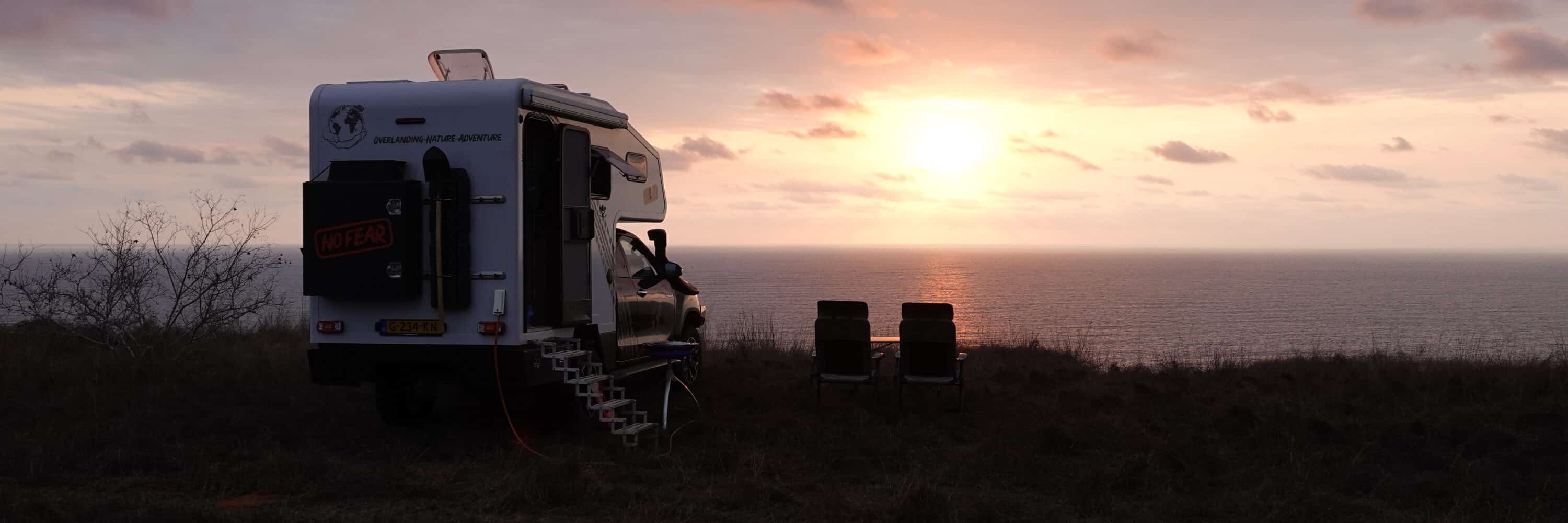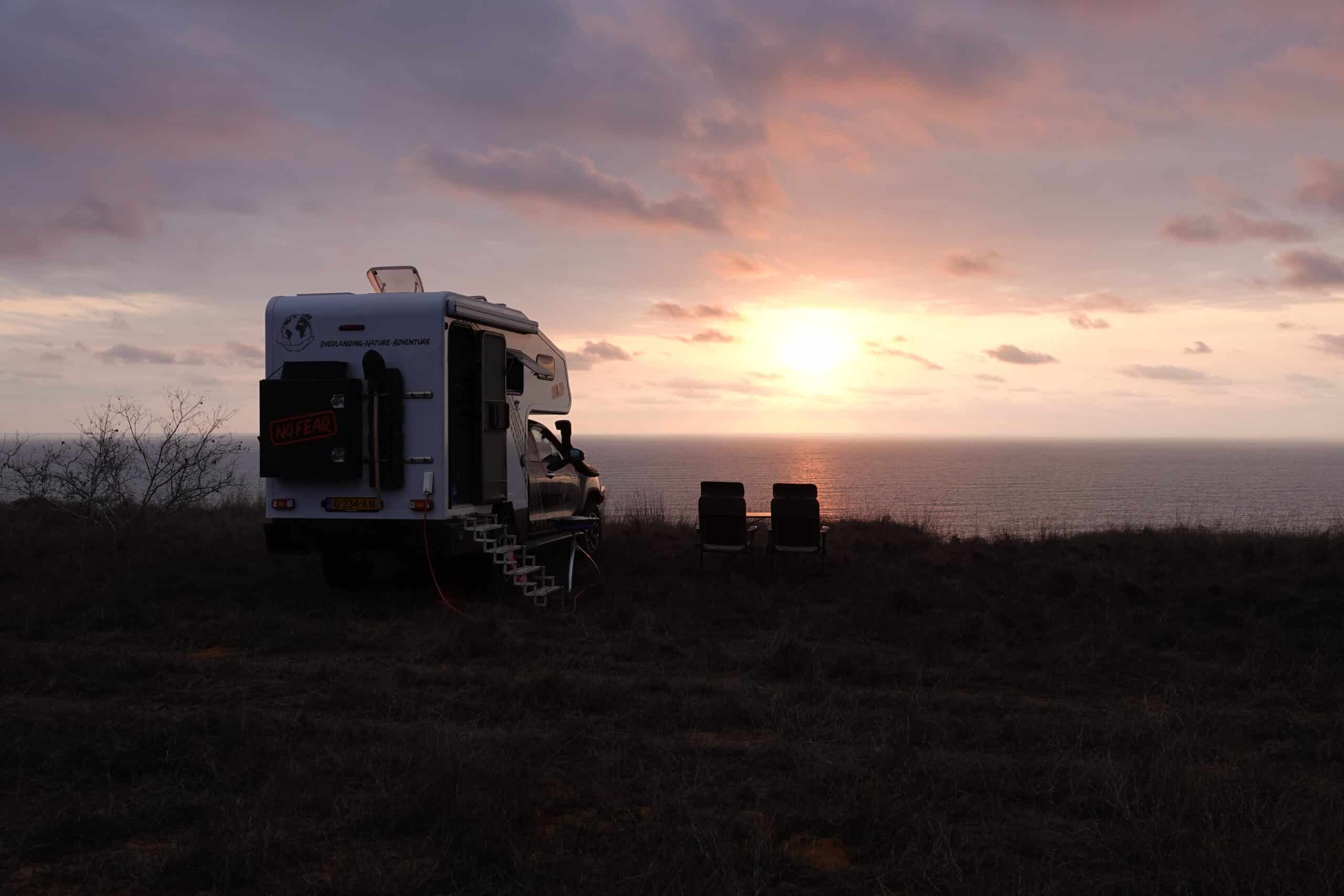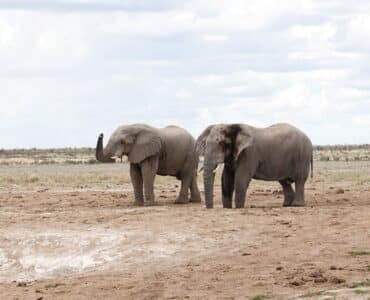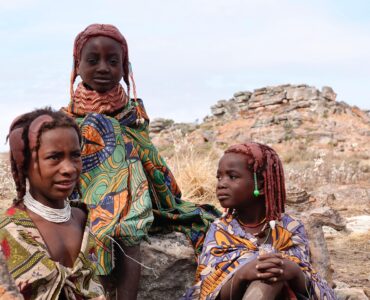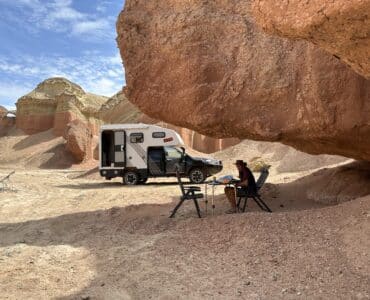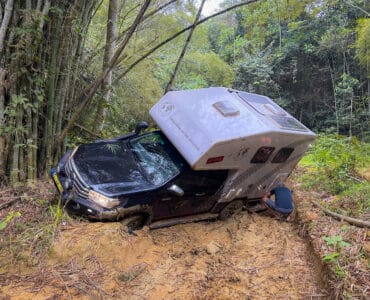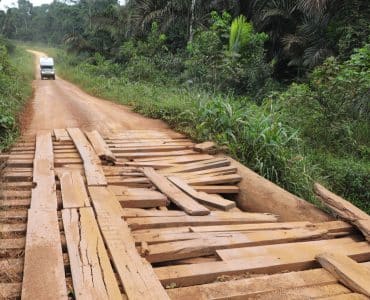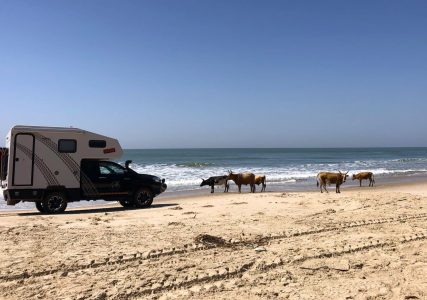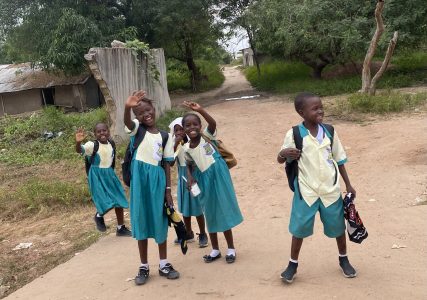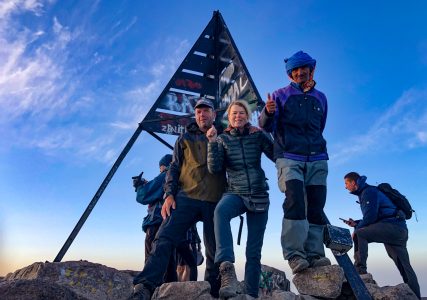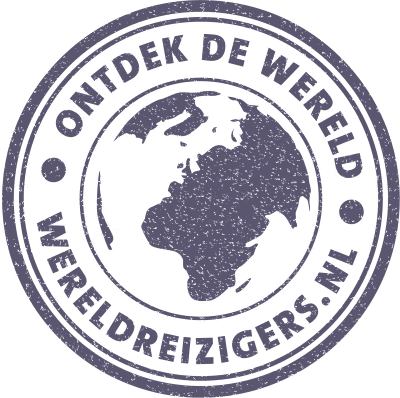Overlanding in Angola. We (Cor and Grietje from NoFear Travel), travel with our Toyota Hilux 4×4 camper by Africa. The African continent is the Mecca for 'overlanding' with many challenging routes and beautiful destinations. The first African country we visited during our trip to South Africa is Morocco, followed by Mauritania, Senegal, Guinea, Sierra Leone, Liberia, Ivory Coast en Ghana. After a stopover in the Netherlands, we continue our overland journey through Africa. We drove on Togo, Benin, Nigeria, Cameroon, Gabon en Congo-Brazzaville and currently we are in Angola.
You can read all about it in this article.
As you are used to from us, you now start watching the video again.
Plan your holiday to Africa here
- Itineraries you can compare + request quotes Africaplus, Africa tailor-made, Djoser, king monkey, rickshaw travel, sawadee en shoestring.
- Flight tickets for Africa you book through Skyscanner.
- Hostels, Hotels and Resorts in Africa you book Booking.com.
- Rental cars : Sunnycars en rental cars.
- Tours and Activities in Africa you book through GetYourGuide.
- travel items such as suitcases, bags and more you can buy at Bol.com.
- SIM cards for Africa you buy extra International sim.
- Parking at the airport you can arrange via Parkos, park care of iParking.
About Angola, after the civil war
In 1975, Portugal decided to withdraw from Angola, which immediately led to a civil war. Two parties - one supported by the Soviet Union, the other by the USA - have fought each other for 27 years. One and a half million victims lost their lives. The country and its infrastructure was completely destroyed. The country has been getting back on track since 2002. The luck is that they own a lot of oil. But you hear and see that the prosperity that results from this is very one-sided.
Extreme wealth and extreme poverty are very close together.
The country is about 30 times the size of the Netherlands and has about twice as many inhabitants. So nice and sparsely populated. Most sights are in the west. But because we want to visit Zambia after Angola, we will also go to the east.
Border crossing Congo Brazzaville – Angola
From Congo Brazzaville we would have liked to visit Congo Kinshasa. But that turned out differently. During the journey, it is made almost impossible for the overlander to obtain the correct papers (visas) to cross the border.
We decide to take a boat trip from the Cabinda exclave across the Atlantic Ocean and forget Congo Kinshasa.
Cabinda is an oil-rich part of Angola sandwiched between the two Congos.
In the capital of the same name we speak with the priest (Father Futti) on a Catholic mission site, where we spend a few nights waiting for the crossing.
He says he would like to become independent of Angola. “They take our oil and don't bring anything back,” he says.
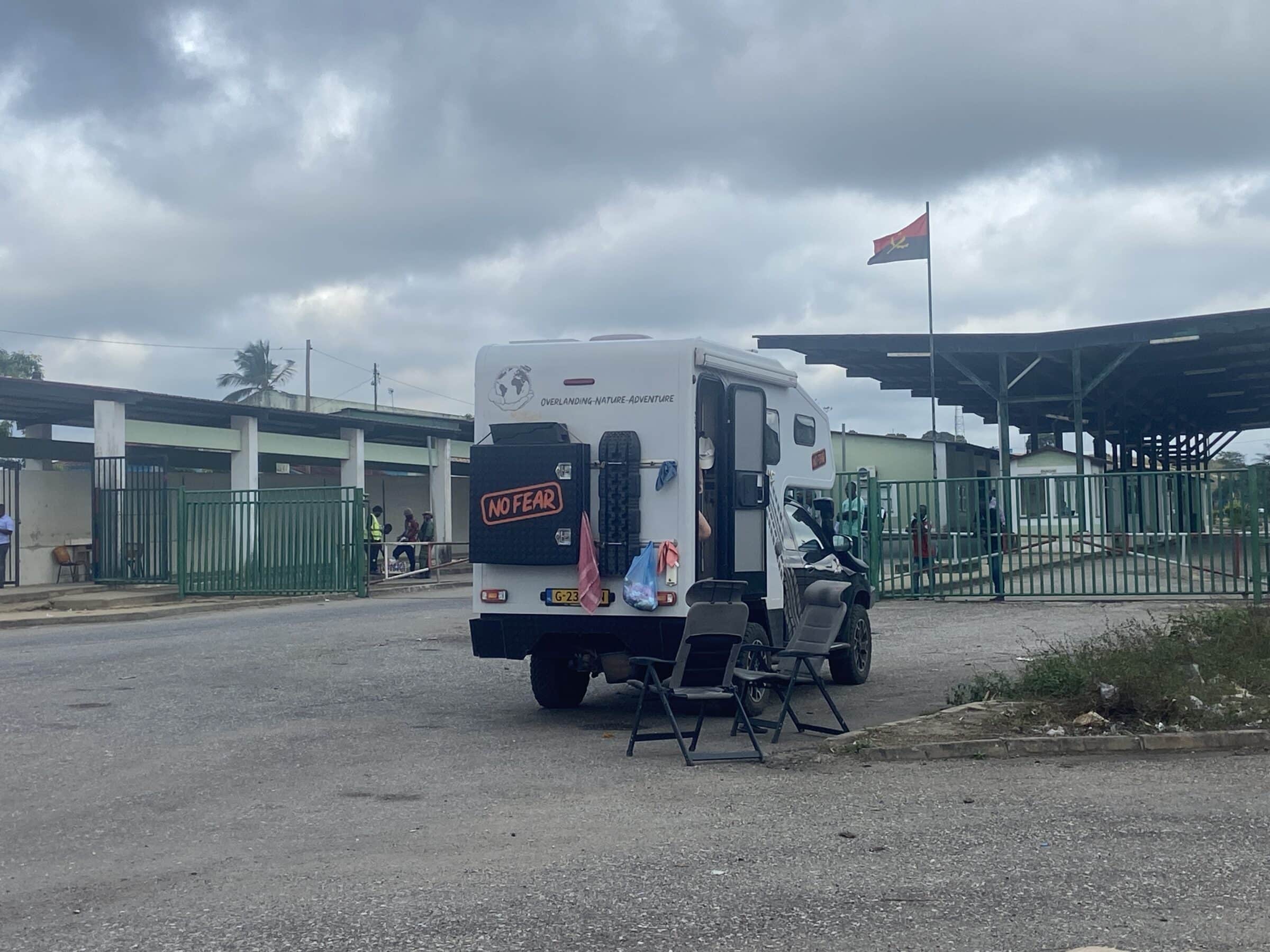
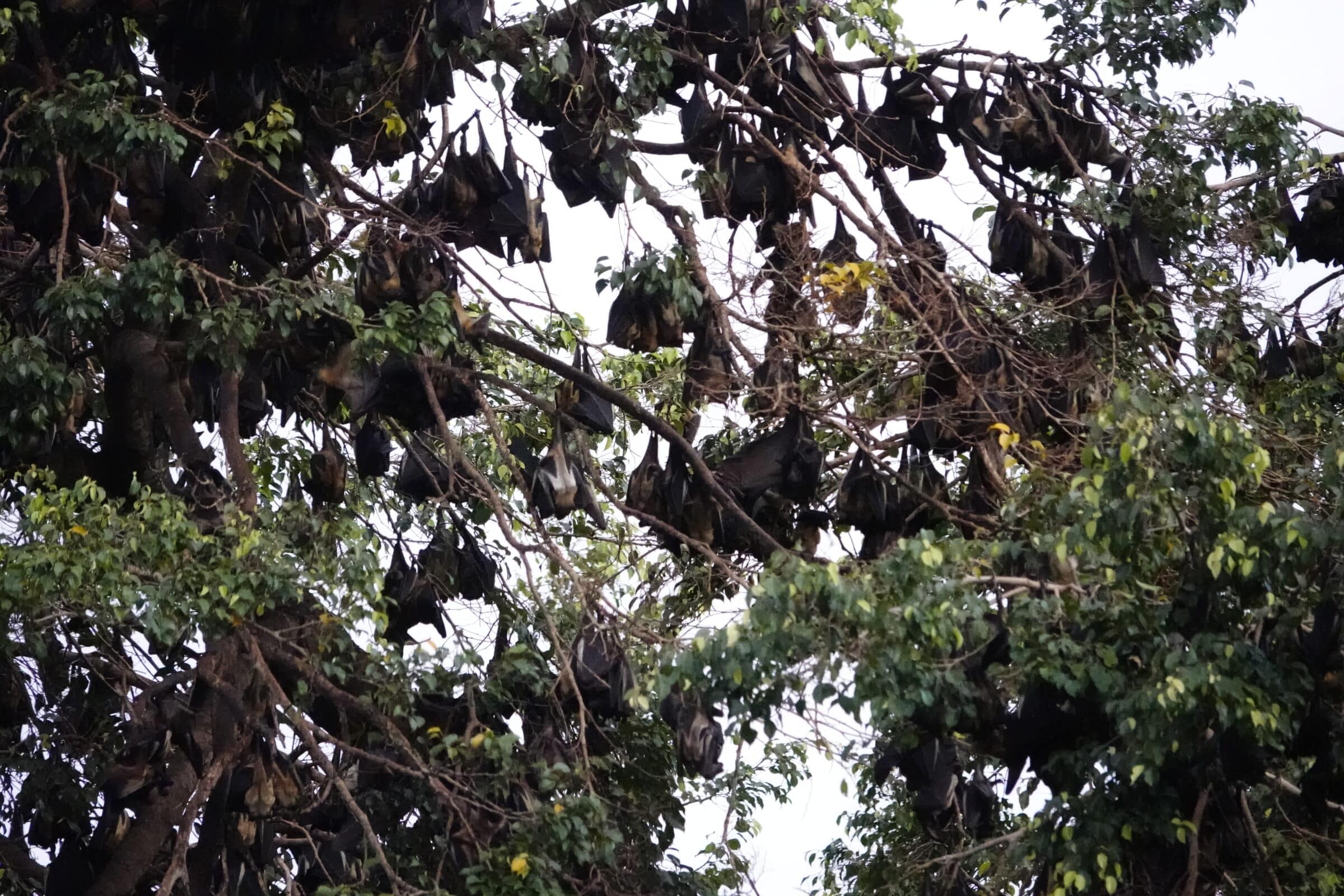
Overlanding in Angola
Kakuakos camping site
After Angolan laws and procedures had tested our patience to the limit, we were finally able to leave the port area of the capital Luanda after 30 hours.
Before that, we had had to negotiate heavily to get on the boat to Luanda because they had suddenly changed the schedule and therefore we could not go to Soyo further north. In Africa, in this case Angola, waiting terribly long is the most normal thing. A new time is always promised and then deviated from just as often, so that everything takes, lasts and lasts even longer...
That's Africa!
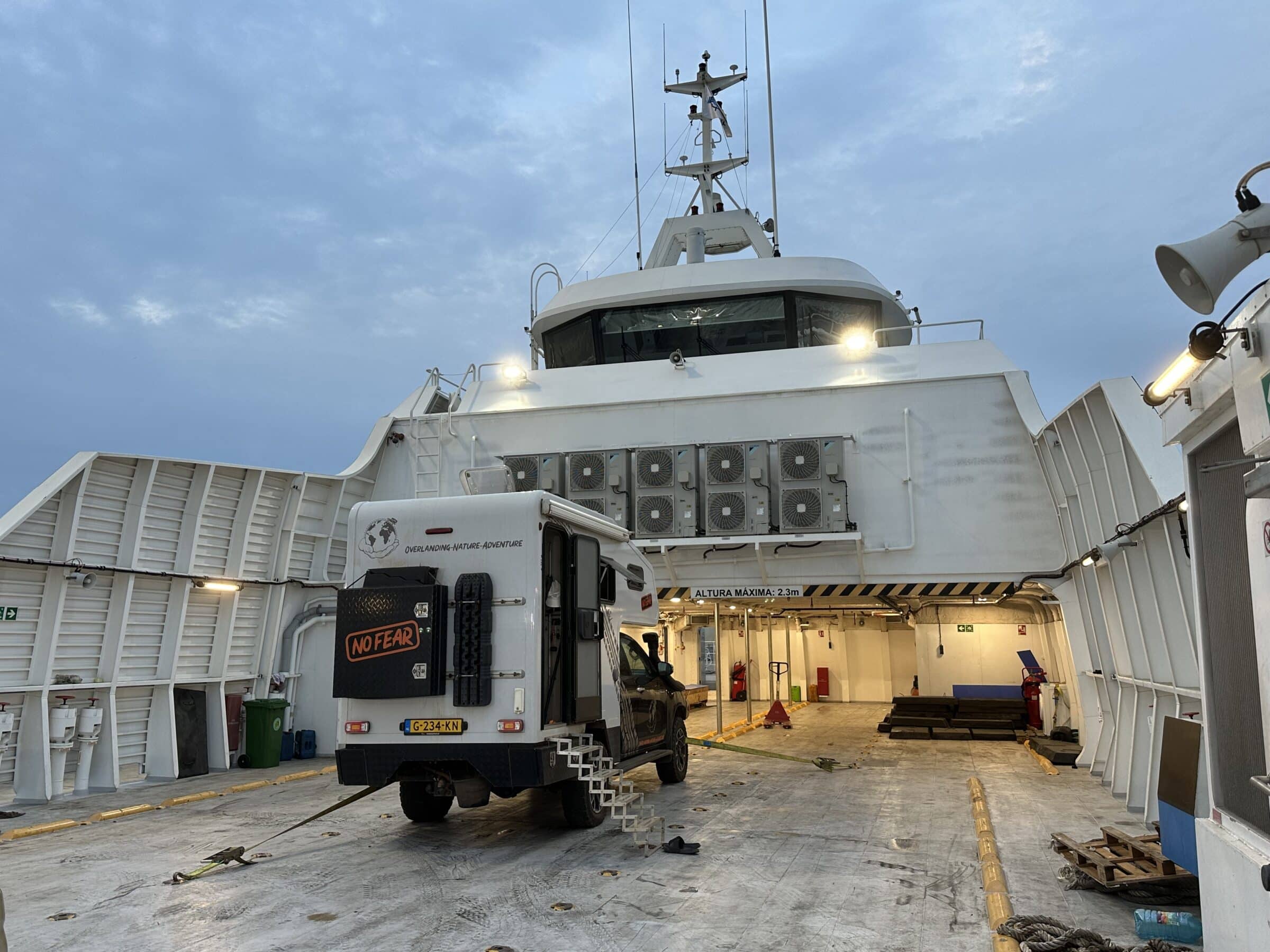
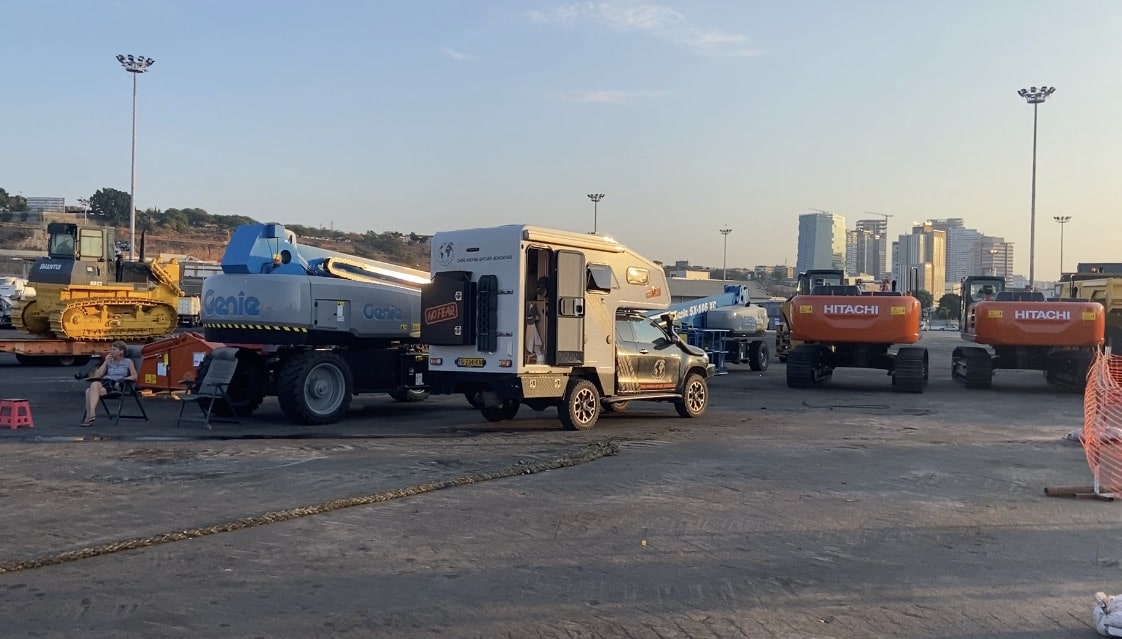
Anyway, after the debacle of the crossing we arrive at the Kakuakos campsite, just north of Luanda. The first time since November 2022 (Gambia) that we have stayed at a “real” campsite in Africa, simply because they do not exist in West Africa.
The campsite is one big surprise. The owner - an Angolan with a Portuguese father - is an enthusiastic overlander himself. He has a well-paid job at the oil company Total, which gives him a lot of free time to travel and keep the campsite running with his wife.
The camping turns out to be a hobby that got out of hand. Everything is perfectly arranged. We receive an extensive tour immediately upon arrival.
He also has a mission with animals. He sometimes catches animals, cares for them and later releases them into nature. For example, he shows us a young crocodile and an eagle with a broken wing.
Then we see a row of overlander cars. We thought he had a group of guests visiting. No, it turned out to be his own collection of 4×4 cars. About 6 of them!
The grounds are also furnished with seating areas, bars and a lovely swimming pool. Even a hair salon. There is also the possibility to carry out minor repairs in a mini workshop. To top it all off for overlanders, there is even a shop with overland items. They have some help to keep everything tidy and the people are super friendly. While the lady of the house prepares a delicious meal and serves us coconuts and papayas, the overland stories fly around the table. With his 30 years of overland experience - during which he of course visited many countries - we were all listening. This place is a real “must stay” for every overlander!
Our planned one night visit turned into three!
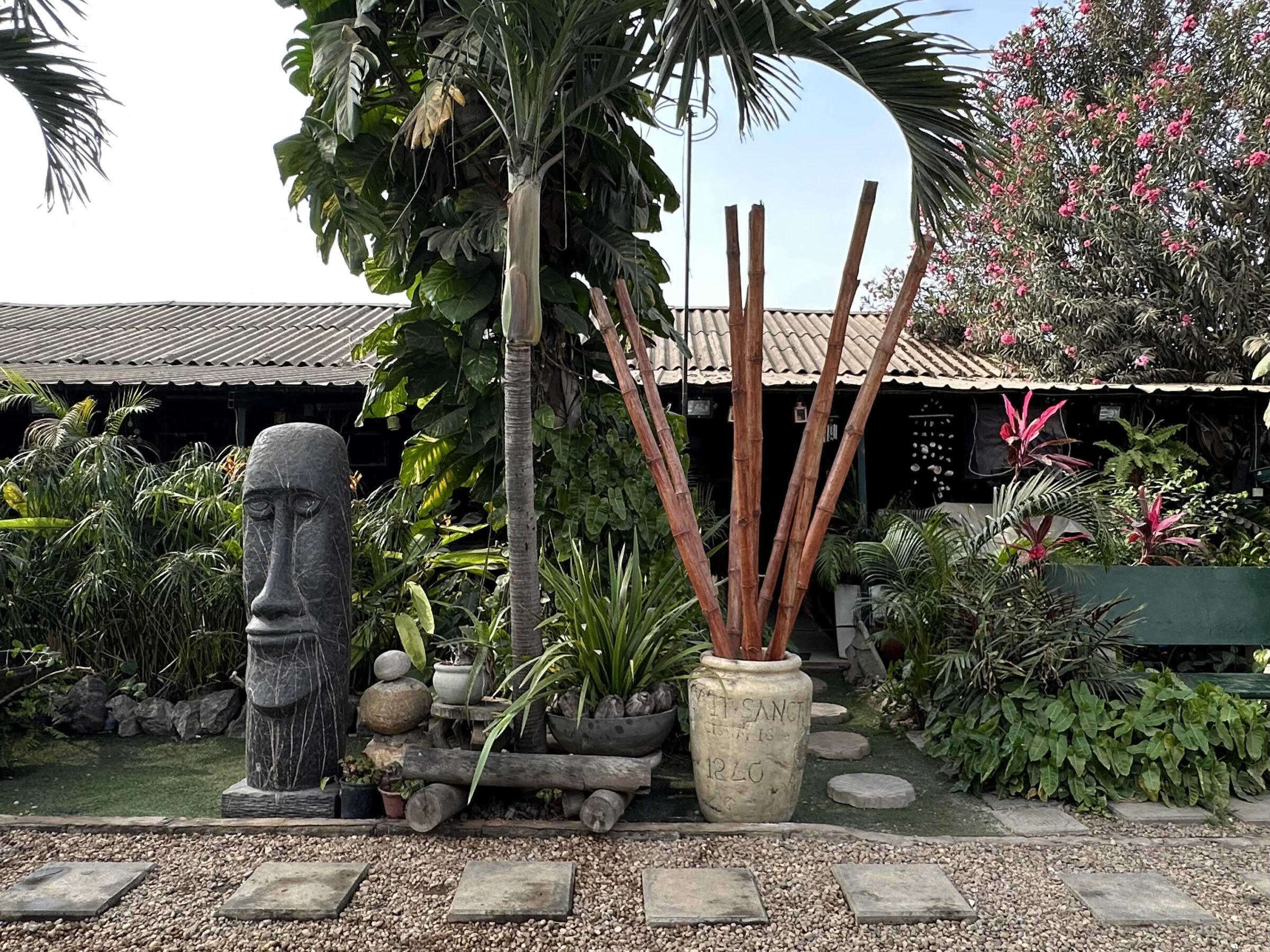
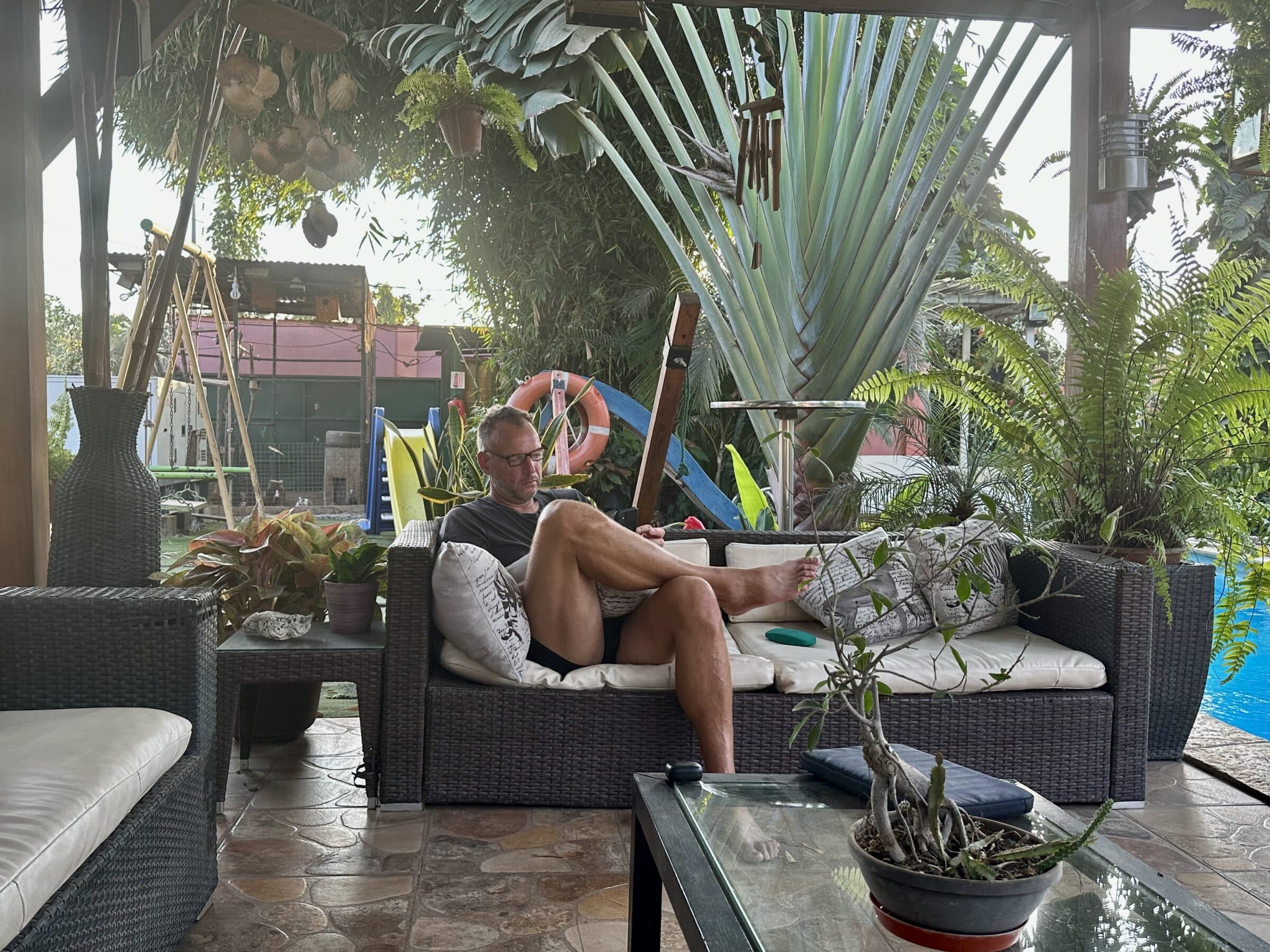
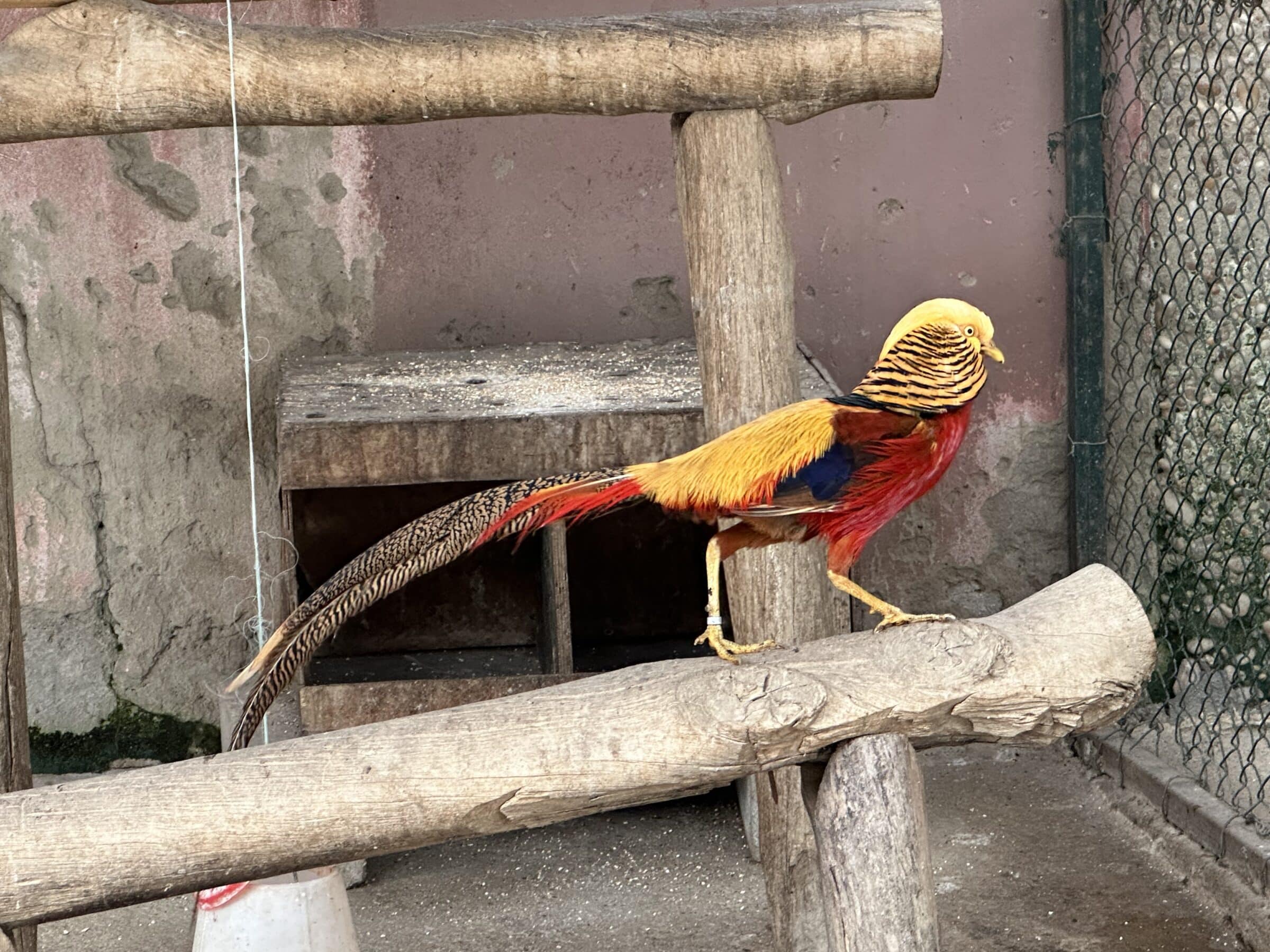
Luanda
Luanda is the Angolan capital with about 10 million inhabitants. Most striking is the enormous gap between wealth and poverty. High, shiny office towers rise above the horizon along the luxurious boulevard. Well-dressed people drive luxury cars and the marina is full of expensive toys. A little further on we see a man dressed in rags filling a water bottle in a hole where water bubbles up. An underground water pipe has apparently burst in the sidewalk. Many young children sleep under the bridge and try to earn a pittance by shining the shiny shoes of a businessman. The oil industry has brought a lot of wealth here, but not everyone is able to benefit from it.
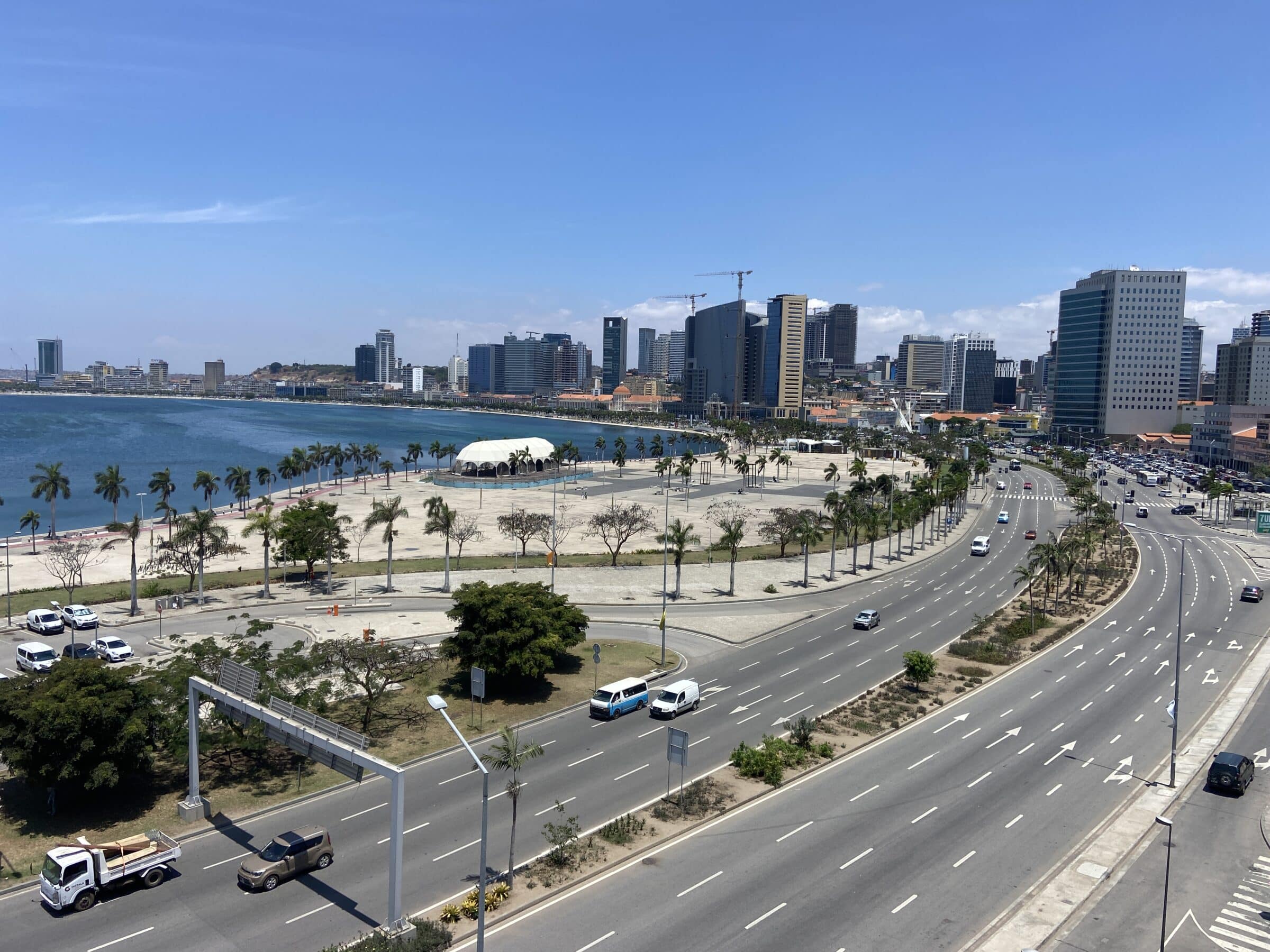
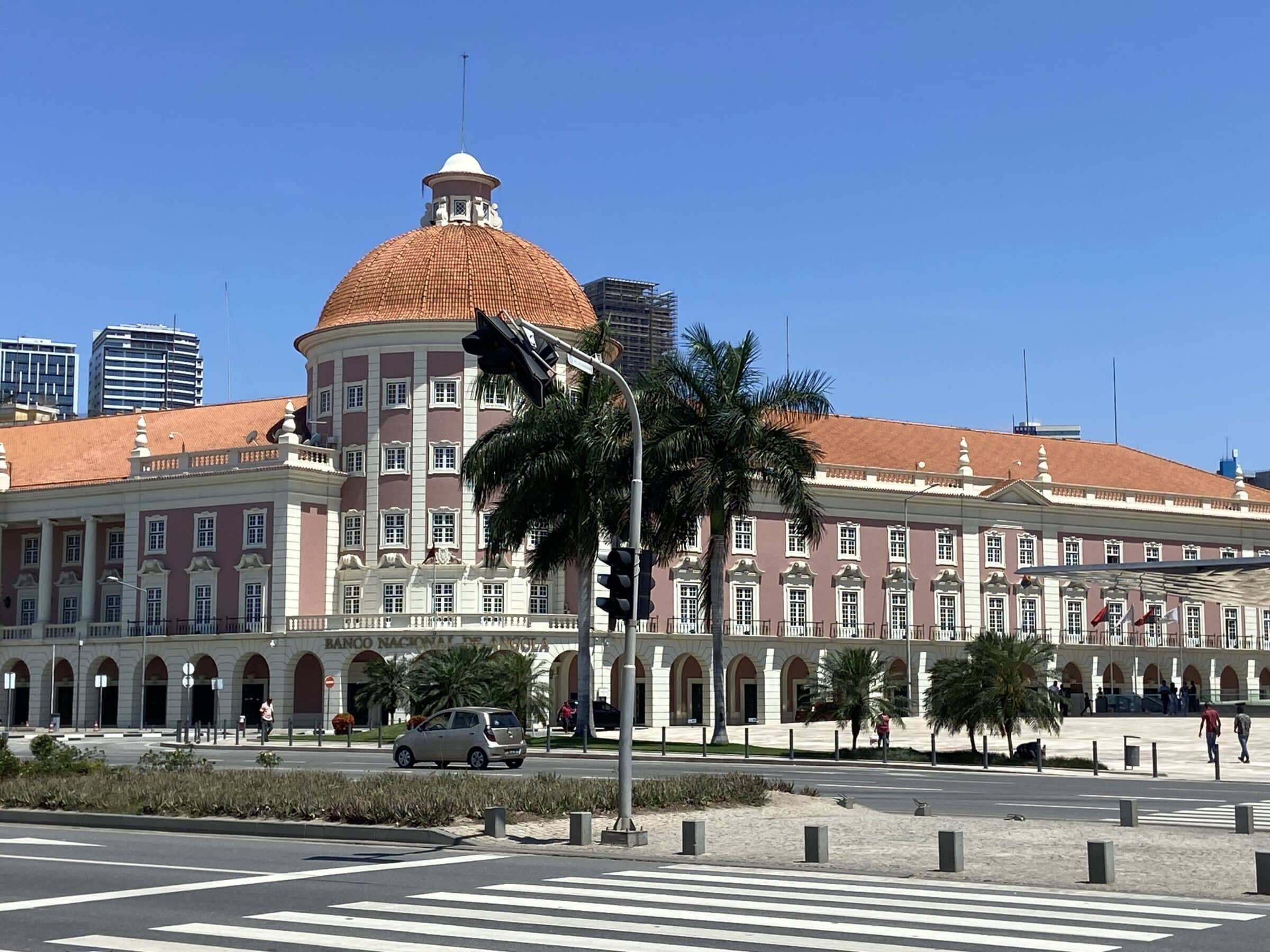
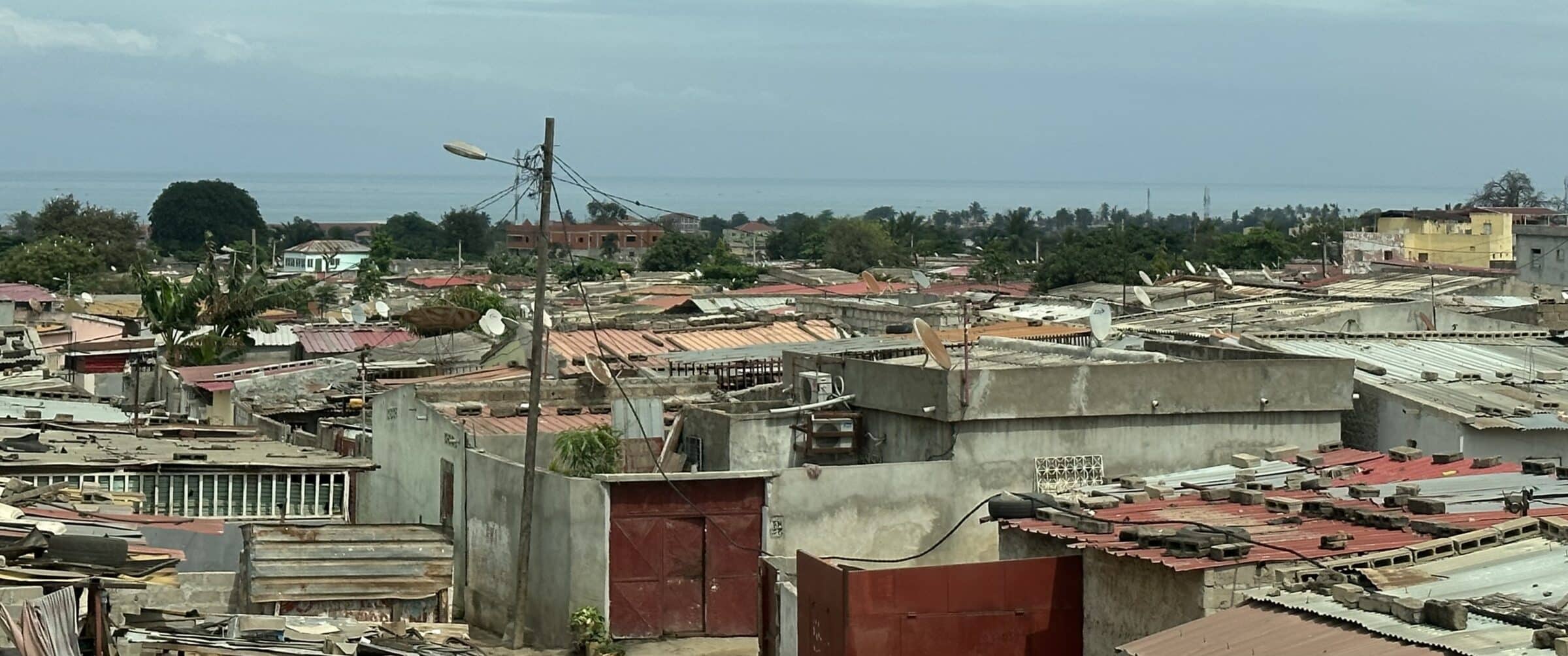
Quicama National Park
We long to leave the city again and go into nature! On the way to the Quicama NP south of Luanda we are presented with fantastic views of the coast.
The stories about the park are somewhat variable. Some travelers ignore it, partly because of the 40 kilometer long unpaved access road that leads to a dead end and you therefore have to go back. The entrance fee is a few euros, so you don't have to leave it that way.
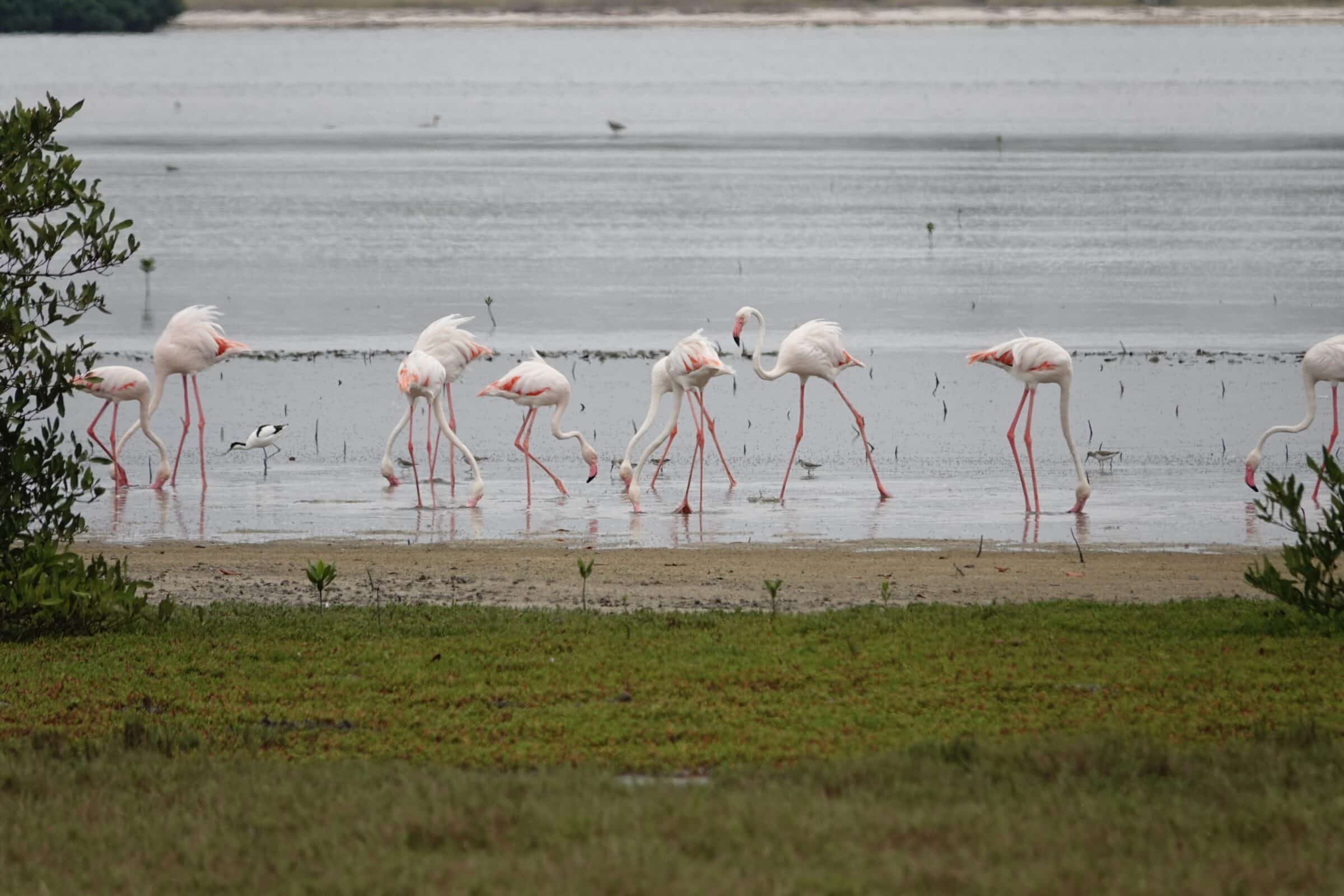
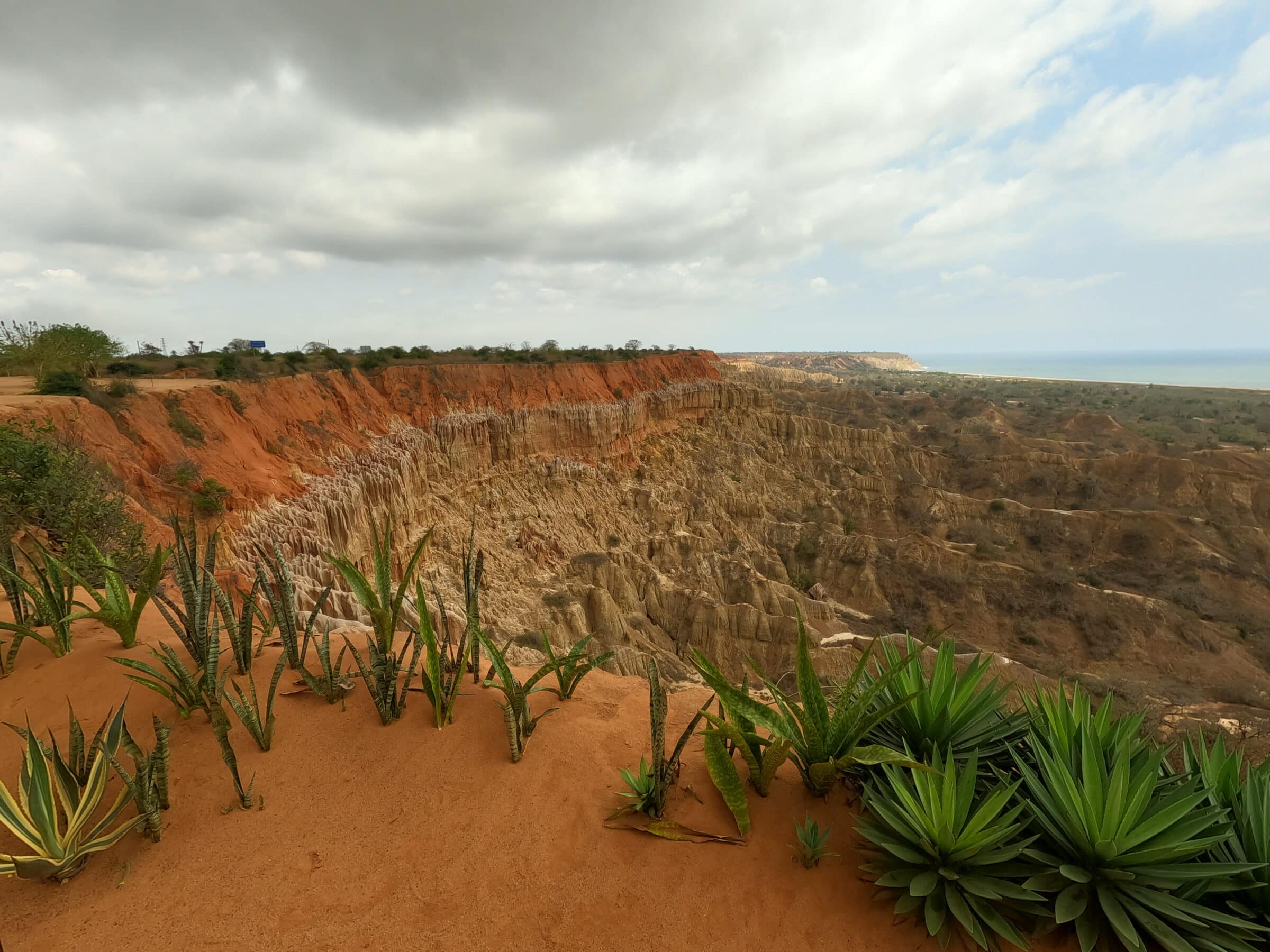
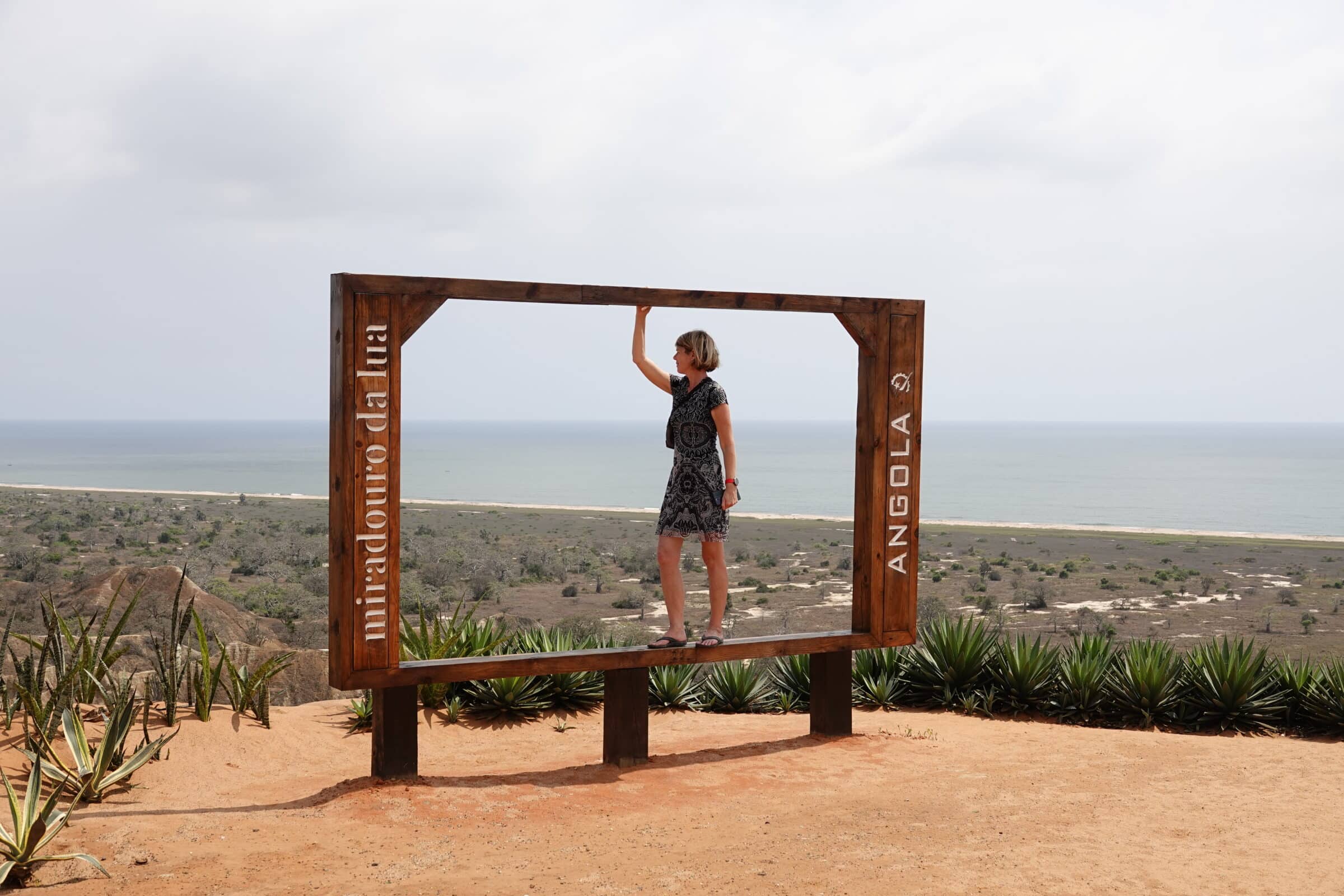
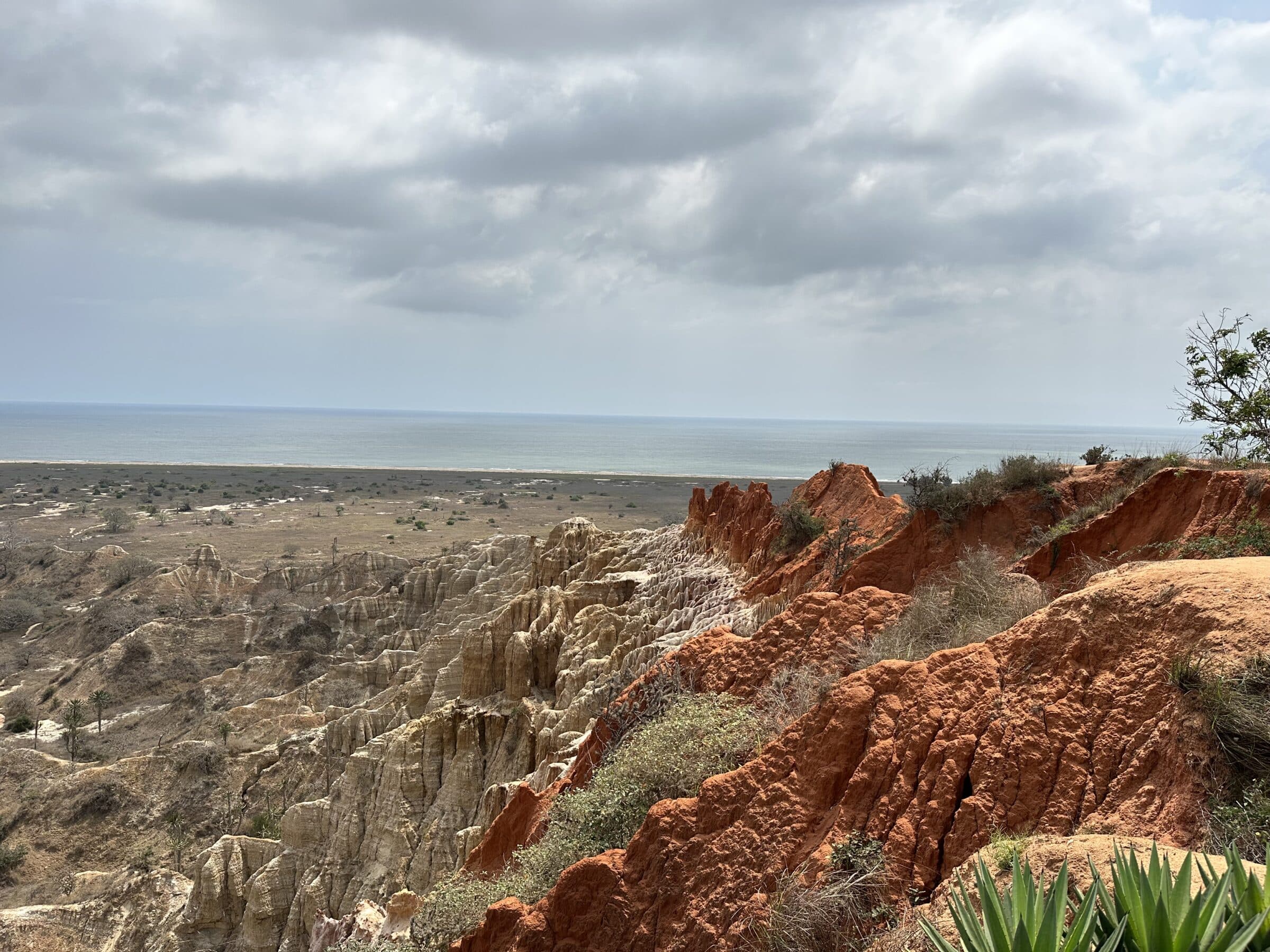
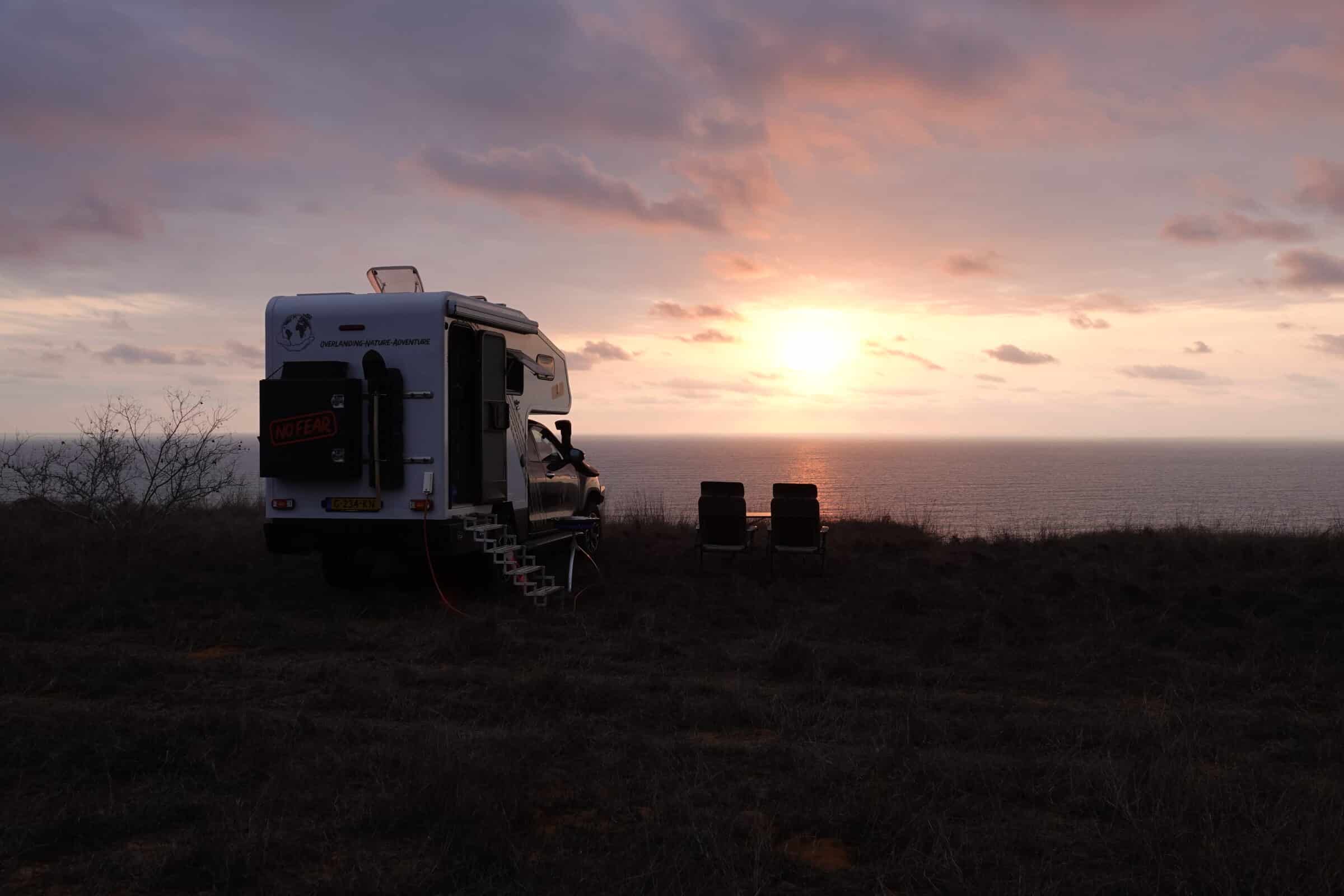
The national parks in Angola were destroyed in the civil war. Many animals have been poached in virtually lawless times. Quicama NP is currently the only park that is functioning again.
Upon arrival we are told that we have to wait an hour, because the minimum group size is 10 people. They are still expecting a group with whom we can go on safari together.
The wait is no punishment with a breathtaking view over the Kwanza valley. The Kwanza River is the northern border of the park. The Angolan national currency is named after this river.
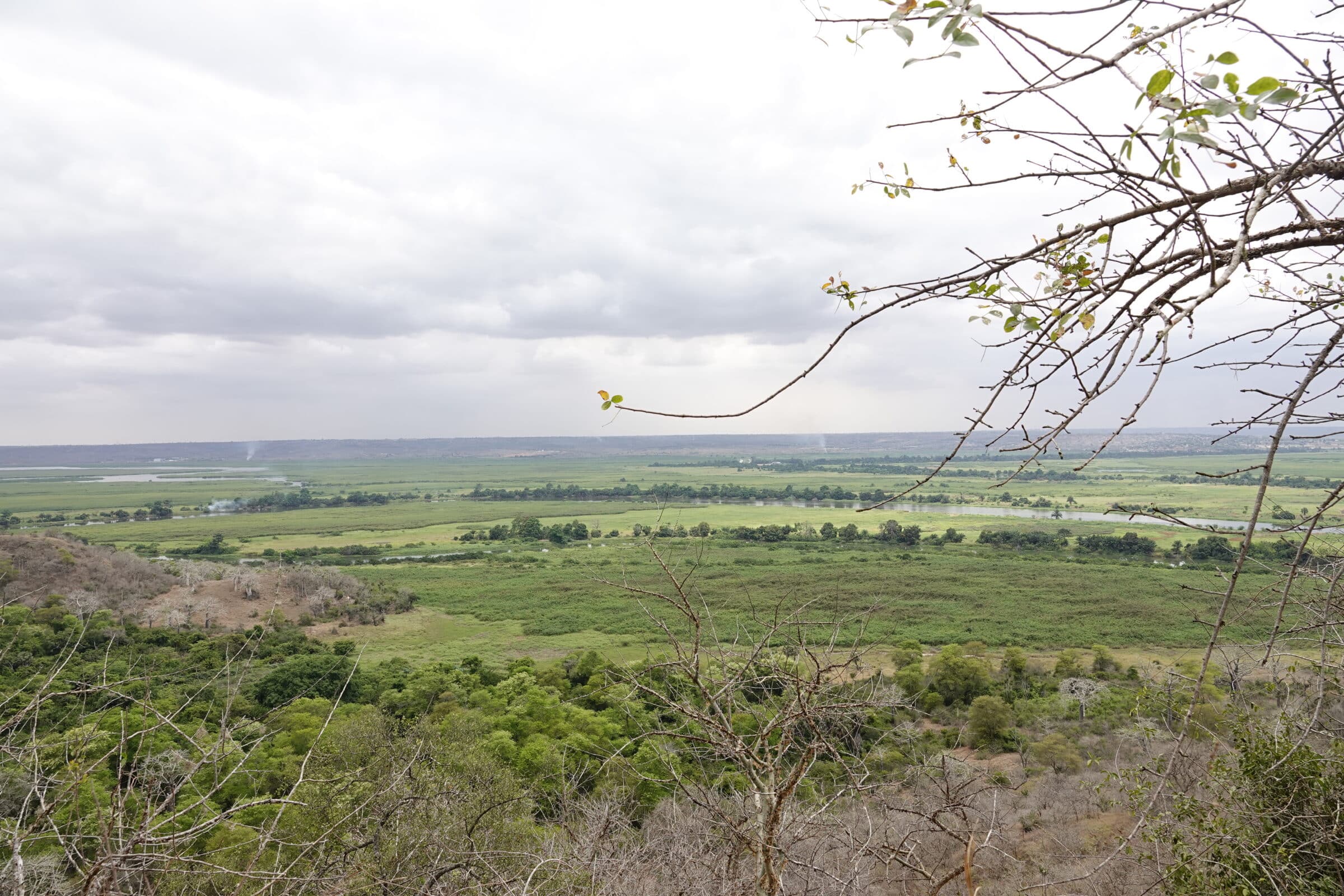
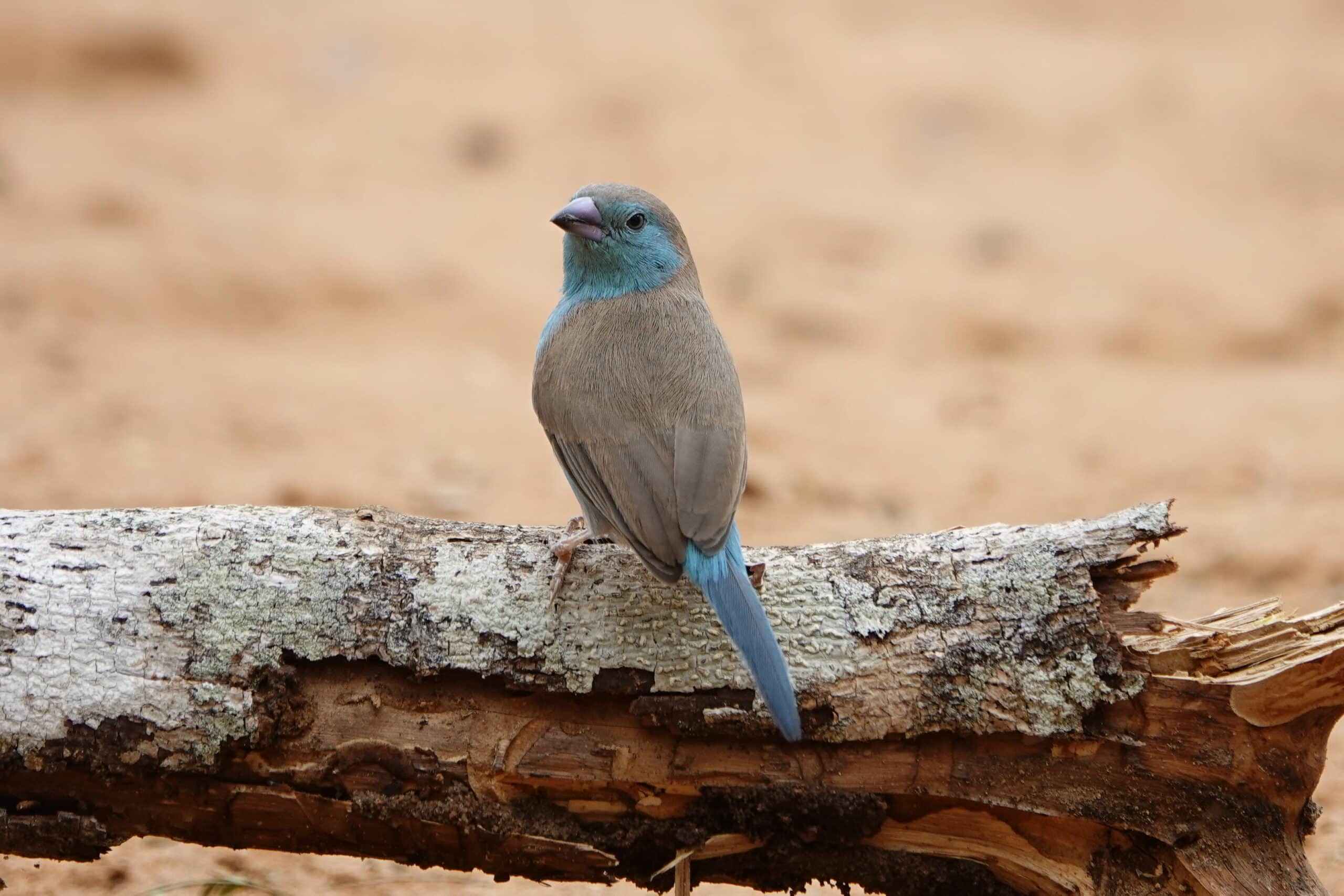
The safari is beautiful! It's just a fun sport to spot wild animals. We see impalas, wildebeest and zebras. Furthermore, many bird species. Giraffes and elephants also live in the park, but unfortunately we were not able to spot them. We really enjoyed the landscape around us.
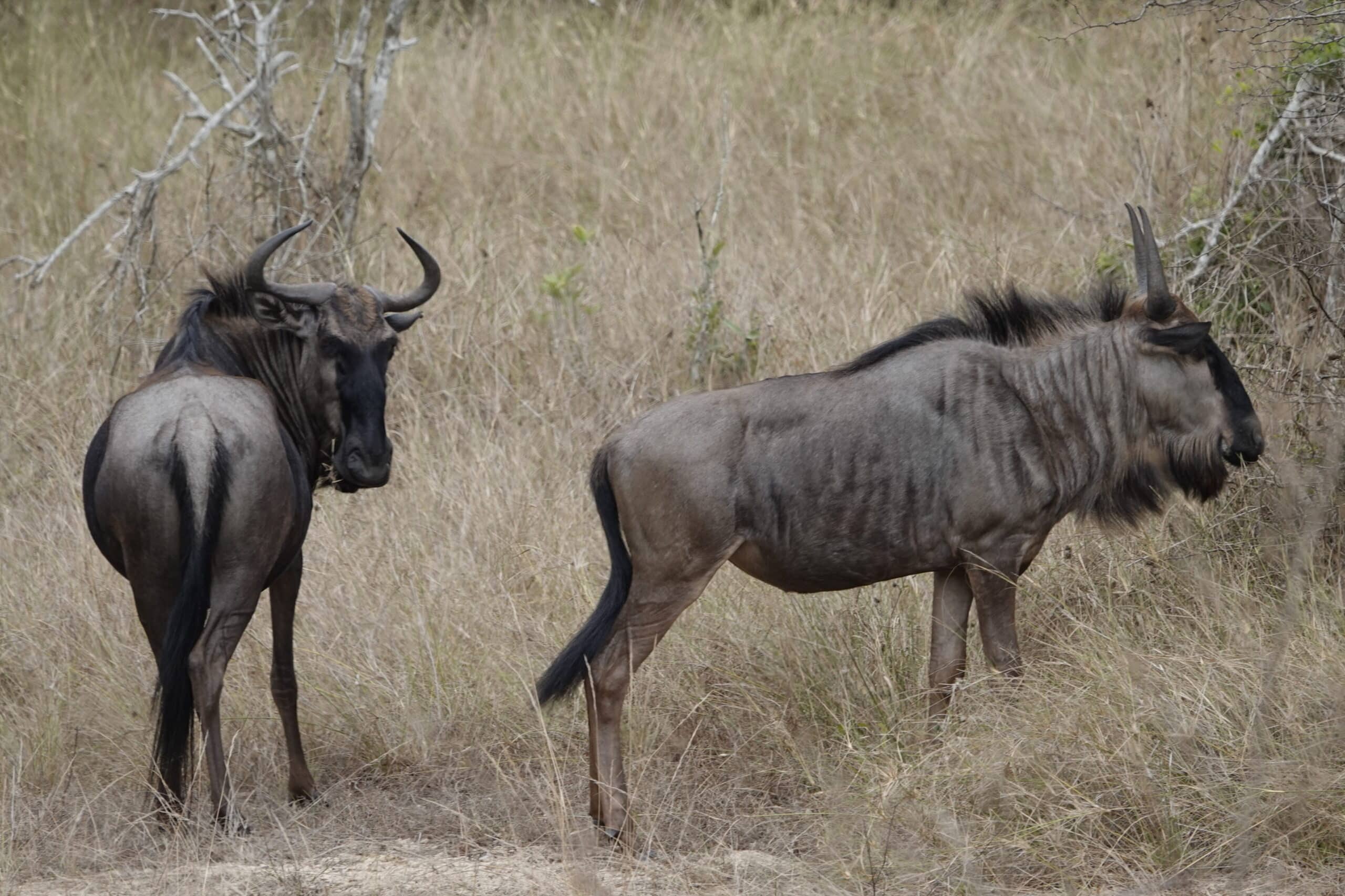
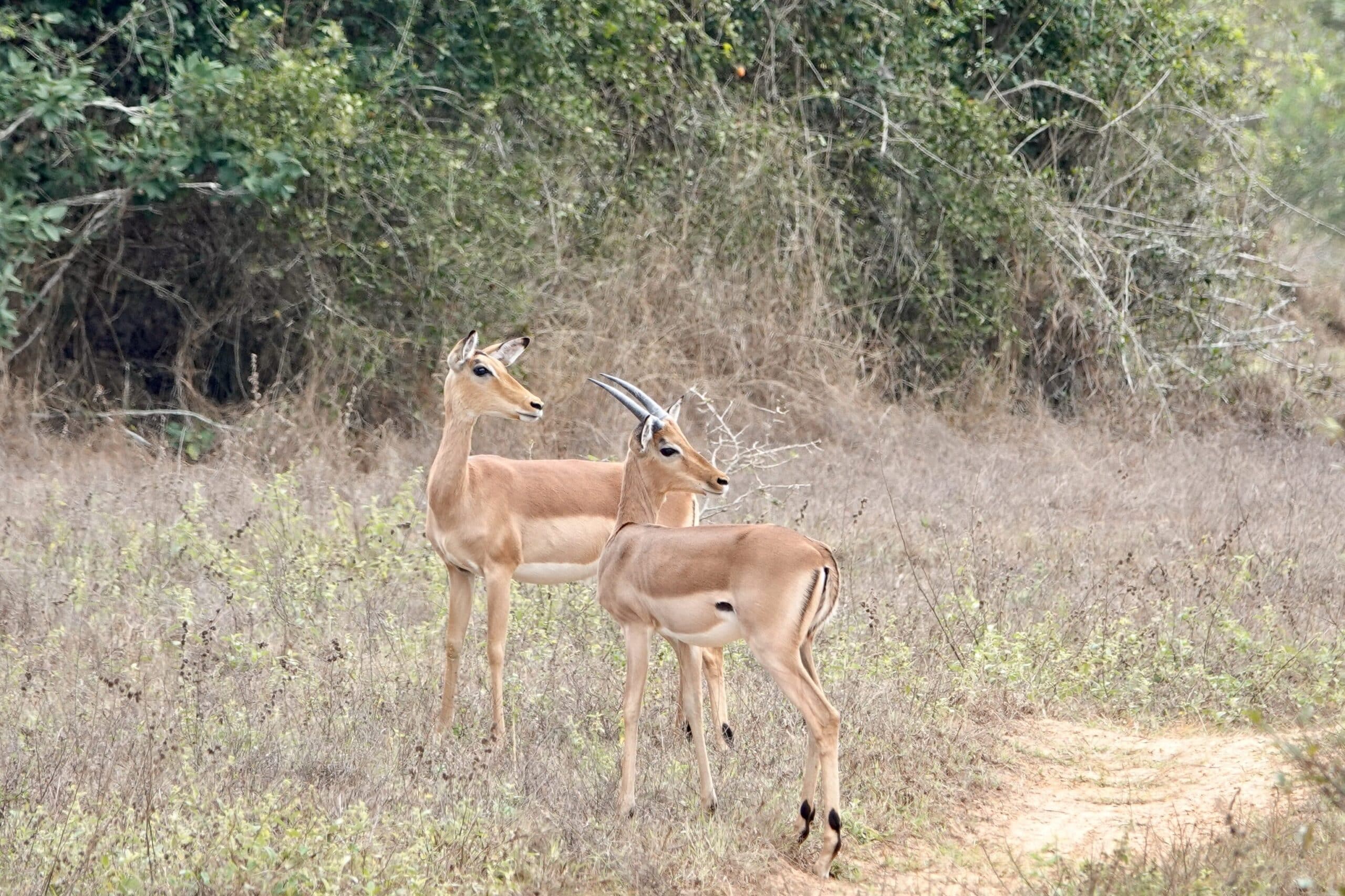
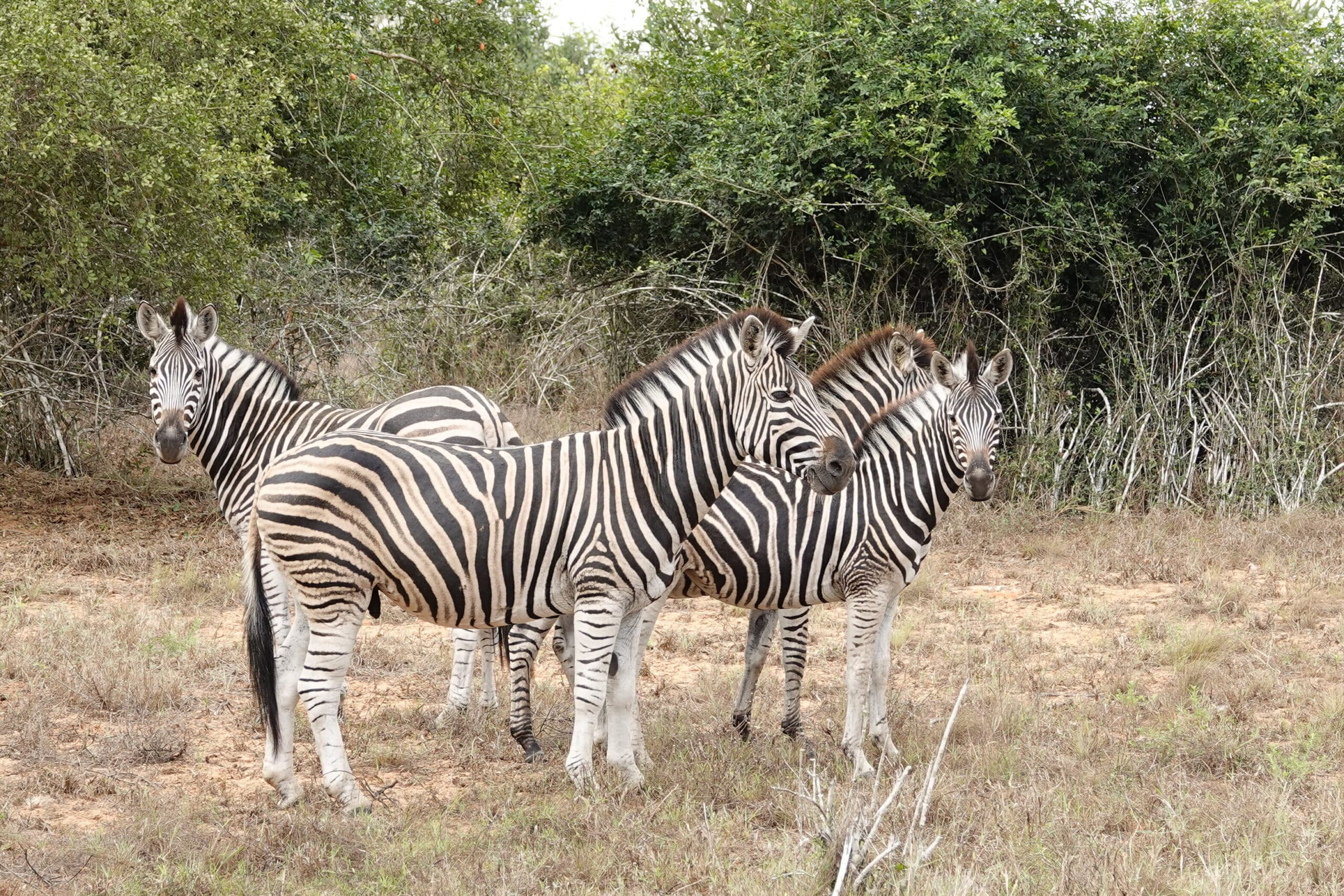
And further…
From the coast we go deeper inland. We find out that the distances in such a large country are quite considerable. But every kilometer is fun!
The roads are generally in order, the traffic disciplined. With the enormous baobab trees, the slightly hilly landscape is often magical. We pass small settlements whose houses are often constructed from clay or zinc roofing sheets. Very occasionally we see stone houses, sometimes even plastered. The mud houses show that they change color with the color of the sand in the area. Sometimes yellow/beige, sometimes deep red.
The people wave friendly!
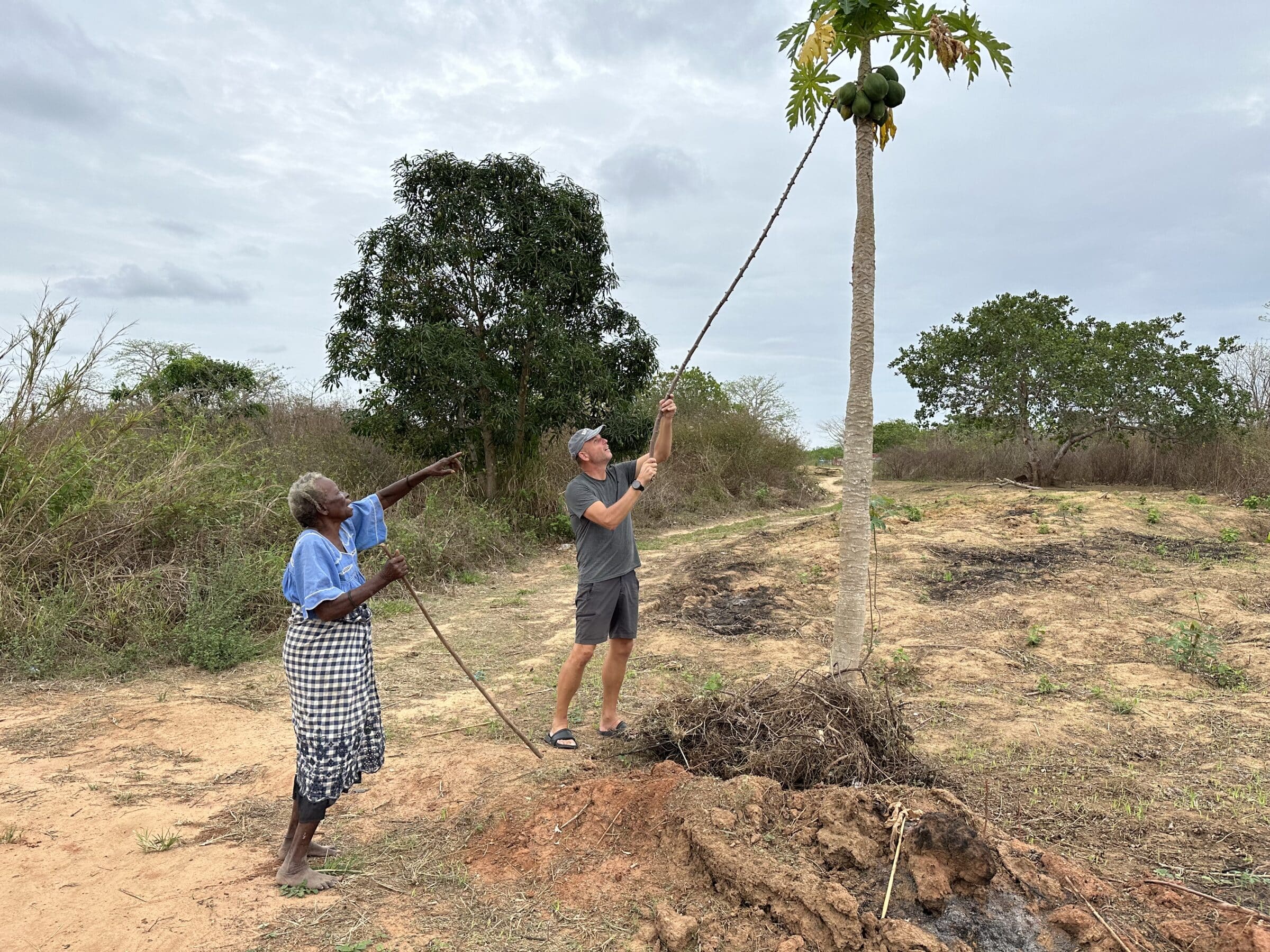
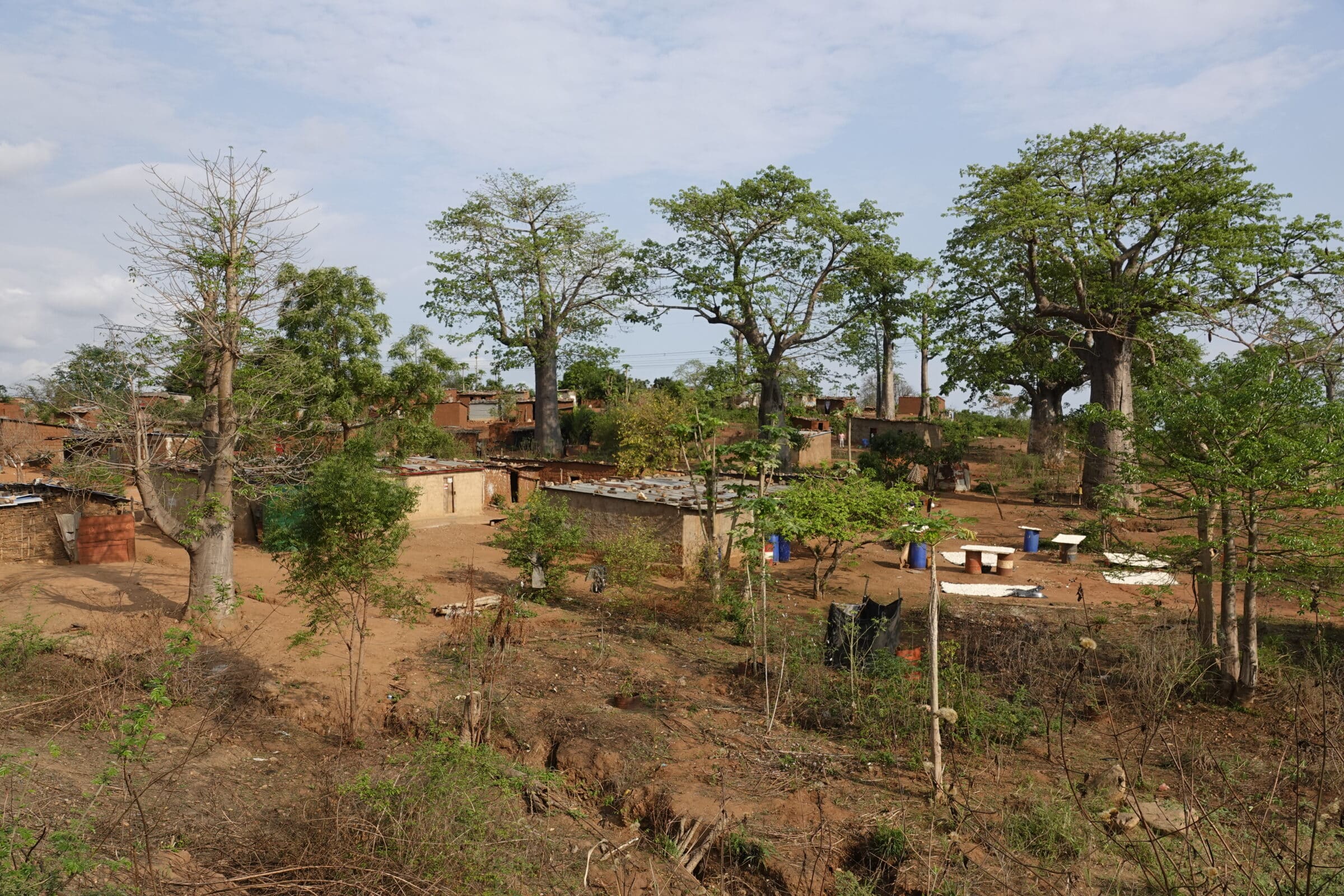
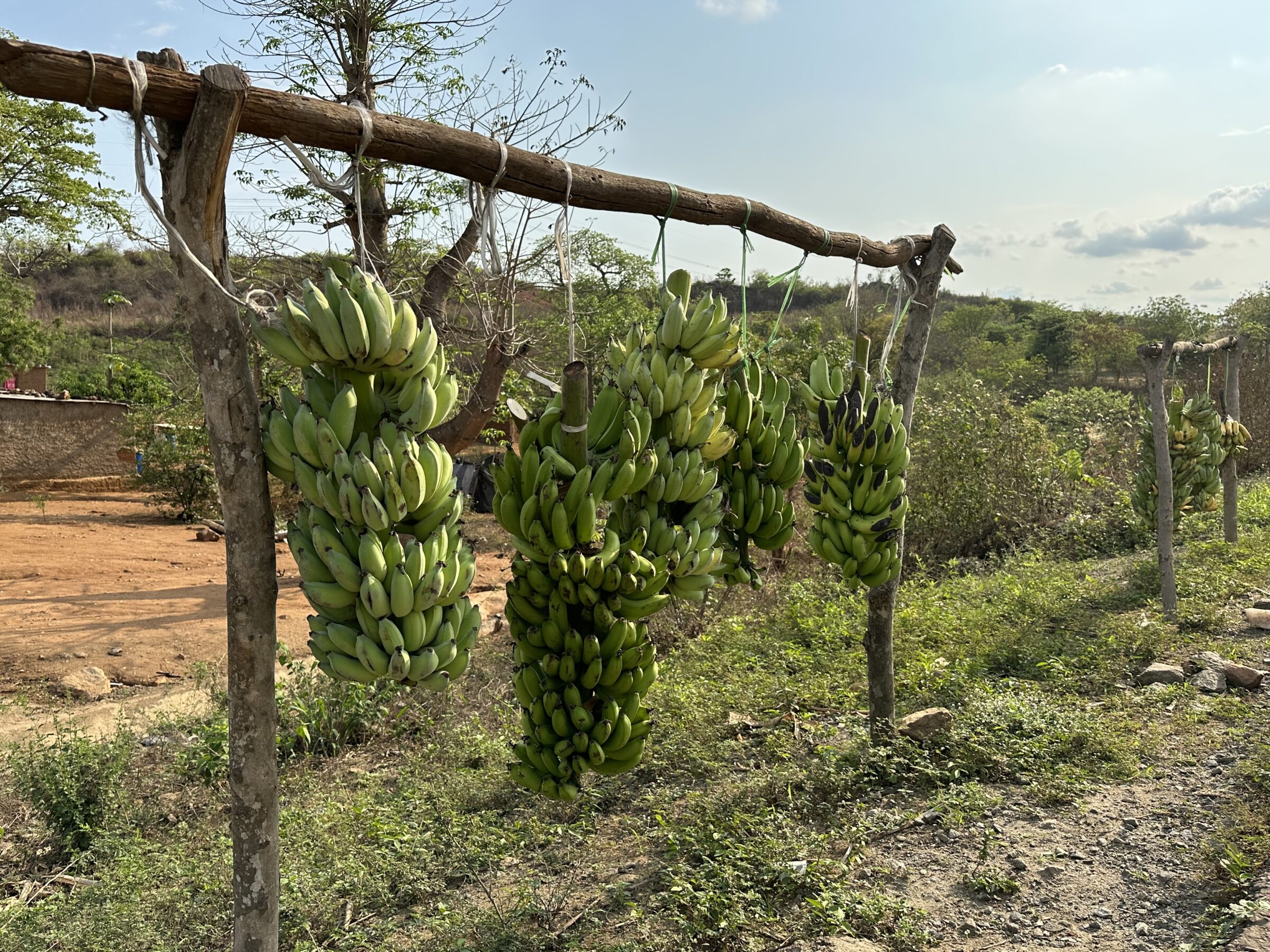
Mukhima
By accident we arrive in the village of Muxima. Our attention is drawn by the many people on the street. Curious as we are, we park on the village square next to the church and ask a police officer what is going on here. He doesn't speak English, but is kind enough to look for an English-speaking villager. This man likes to show us around.
The village turns out to be a place of pilgrimage. Many Roman Catholic believers come from all over the country and even surrounding countries to the centuries-old church. Buses run back and forth.
But there are also a lot of construction activities going on. Our “guide” says: “All houses in the village are being demolished and people have to move to new houses on the edge of the village. A new church will be built on the vacated site where more than a hundred thousand worshipers will soon be able to attend services.
People often save for years to afford such a trip.
Next to the new church is a huge area where preparations for the construction of new “hotels” are in full swing. People will soon be able to come for a weekend to be able to attend all the services as much as possible. The enormous investments are paid for by the Vatican, the Angolan government and donations from churchgoers.
We conclude: “religious mass tourism”.
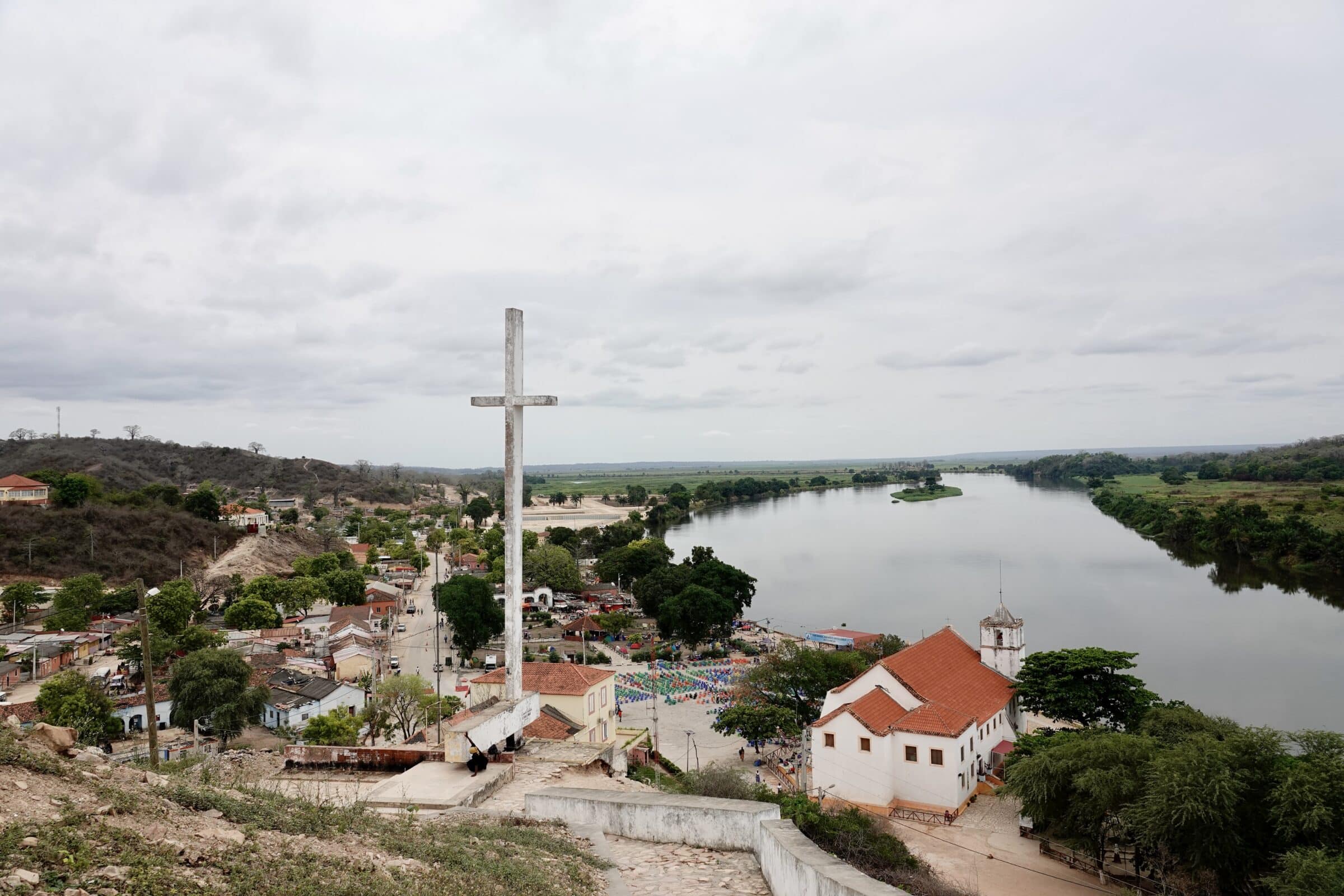
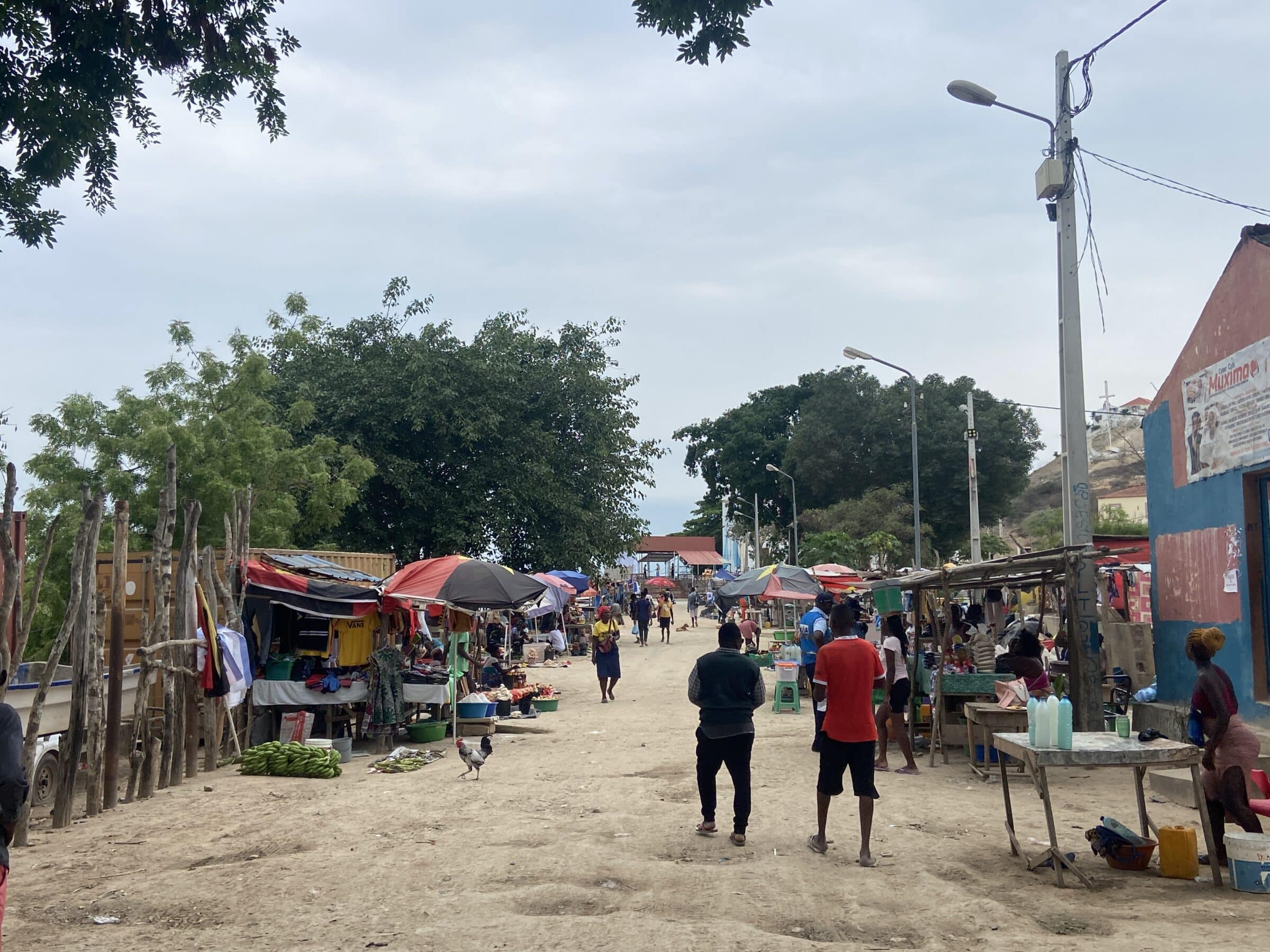
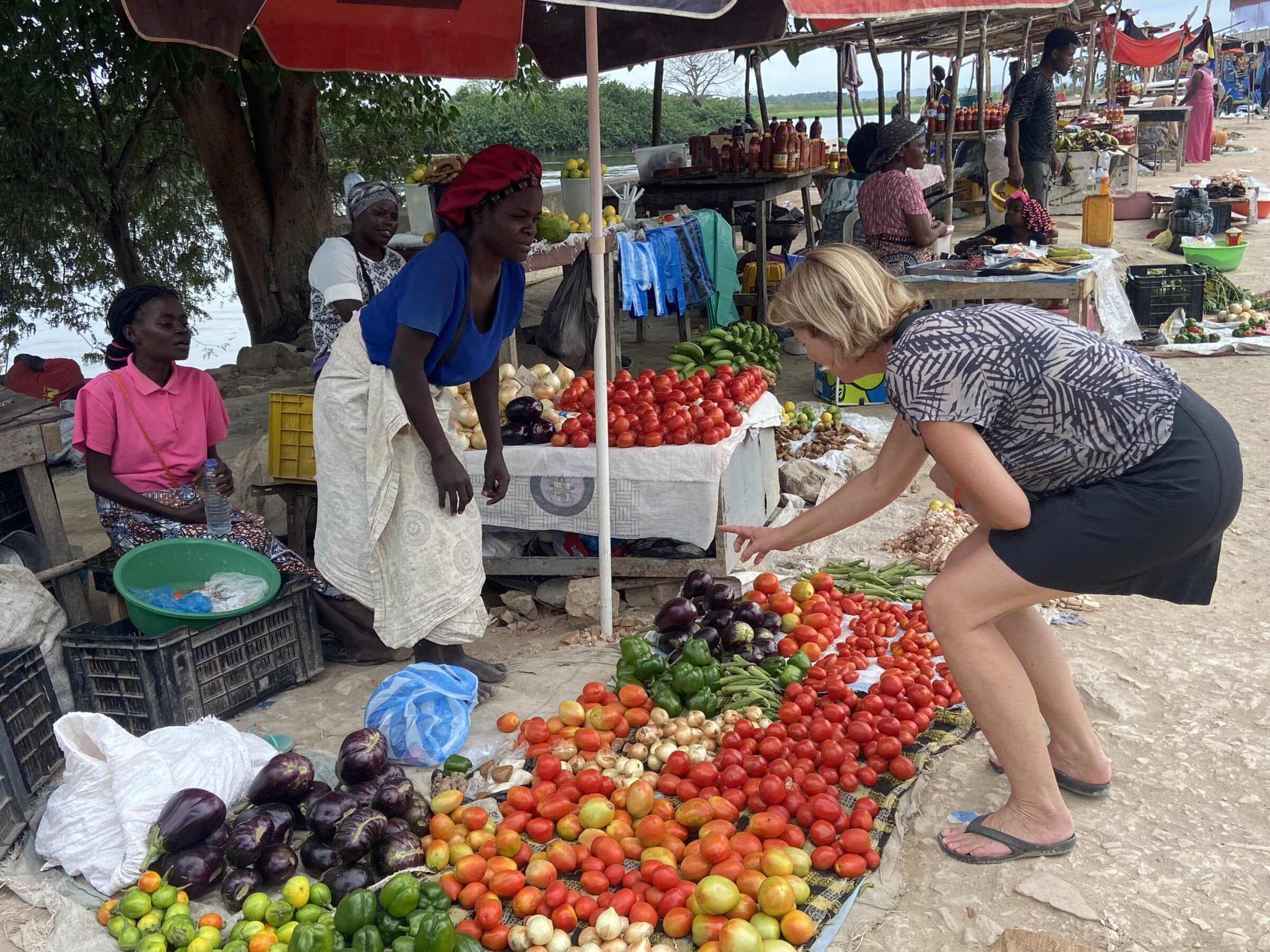
Pedras Negras de Pungo Adongo
The road to Pedras Negras (black stones) was initially perfect, super nice asphalt and hardly any traffic. The road also leads to a dam with a power station. Exactly at the location of this power station, the beautiful road has come to an end.
The road surface turns into a holey cheese with holes sometimes 30-40 centimeters deep.
Not a problem, because we already have a view of our goal: the Pedras Negras.
The monolithic rock formation is very impressive. It stands out prominently above the rest of the savannah landscape.
In the center of one of the formations is an almost deserted village. On our walk to the viewpoint we see a few people and many collapsed buildings, some from the time of Portuguese colonization.
From the viewpoint the view all around is fantastic. The rock formation is most impressive from above.
We spend the night -wild camping- stiff next to a huge rock.
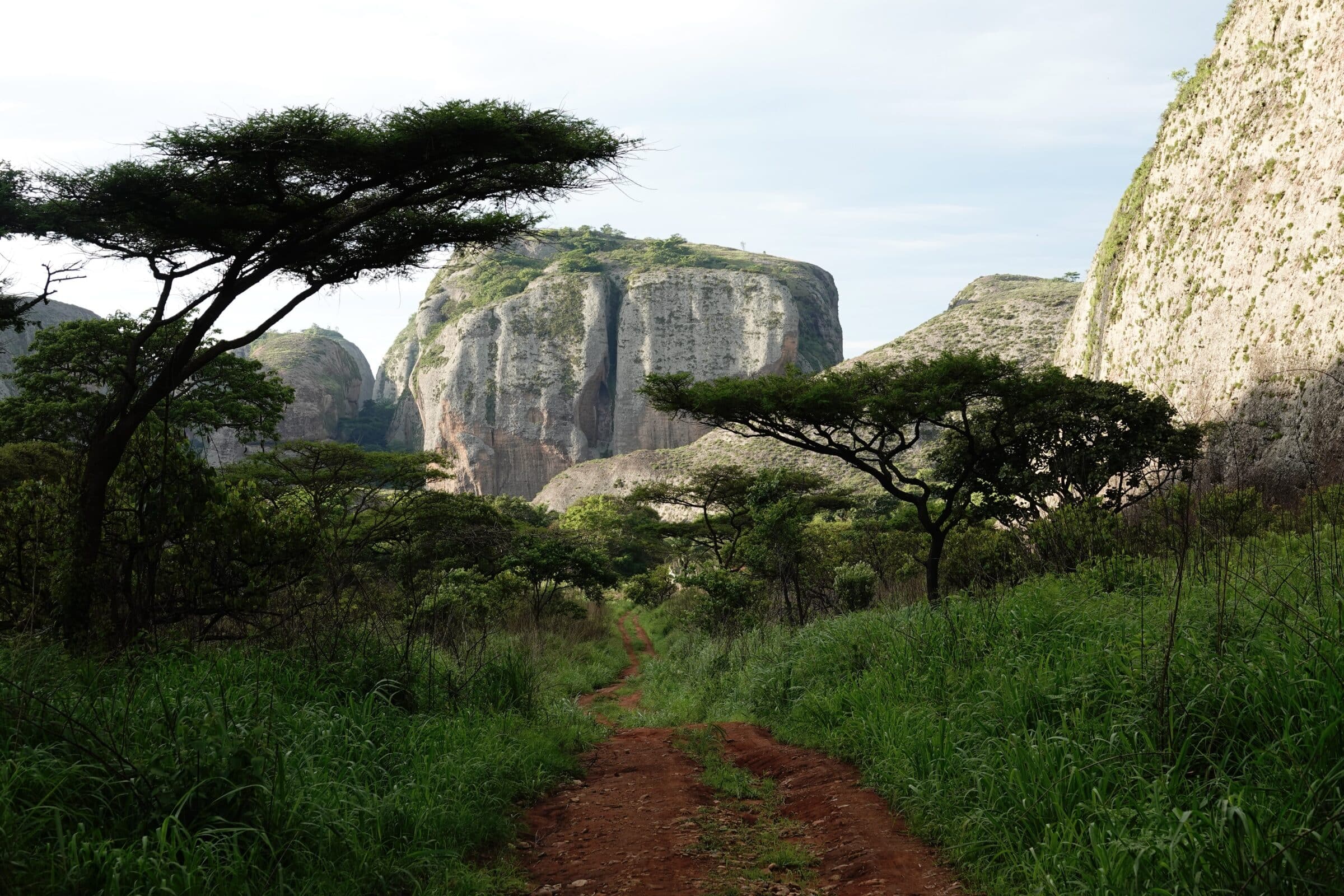
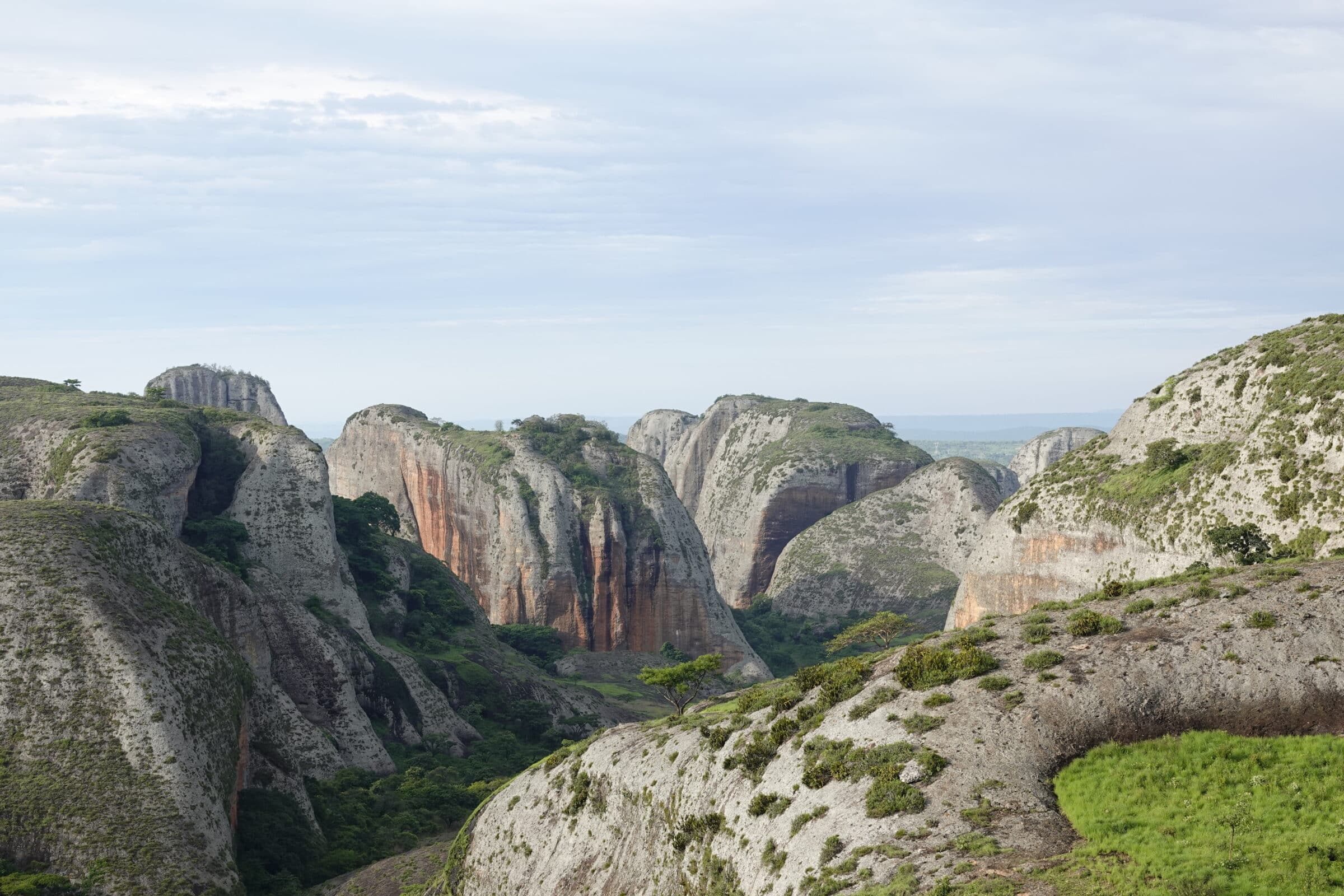
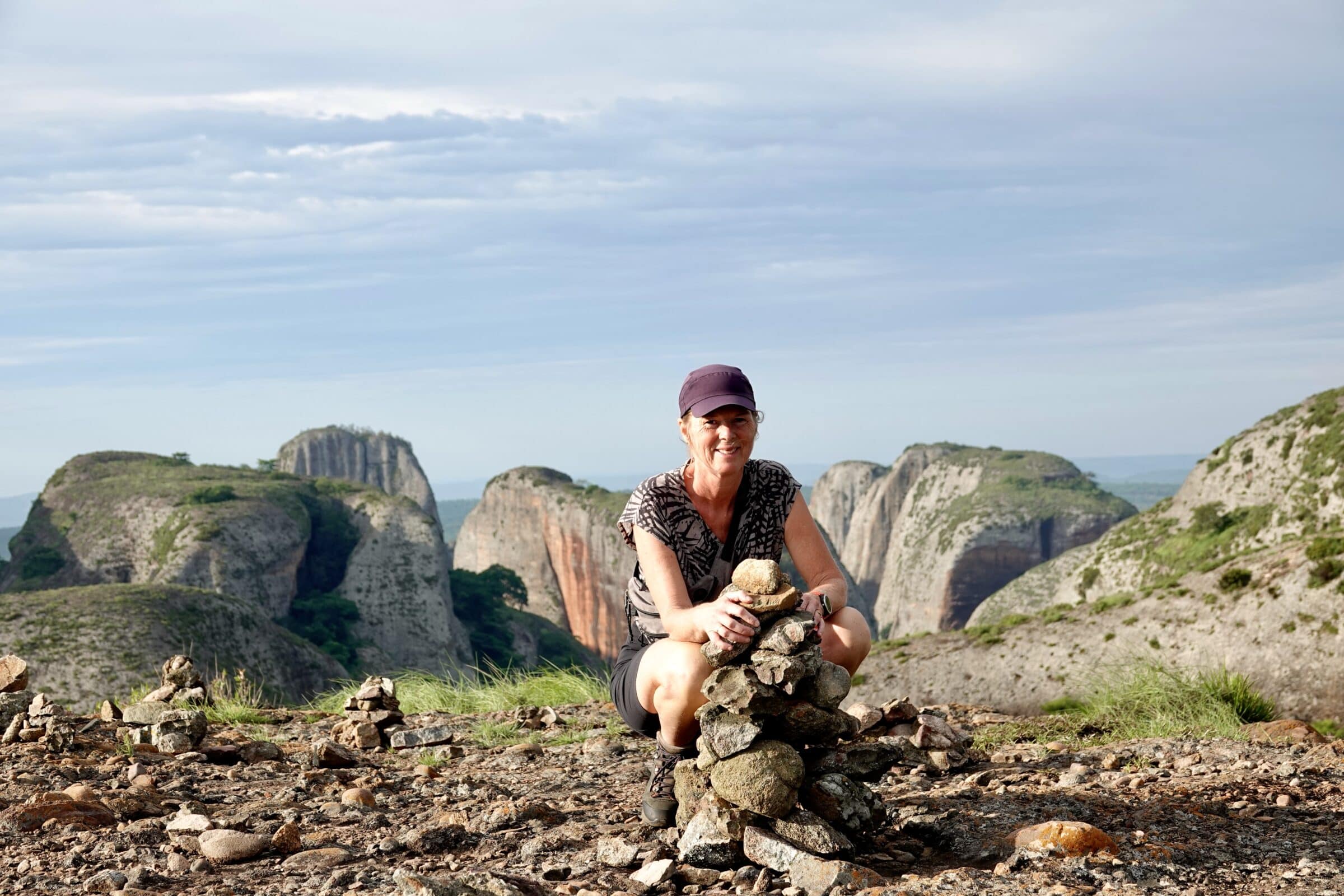
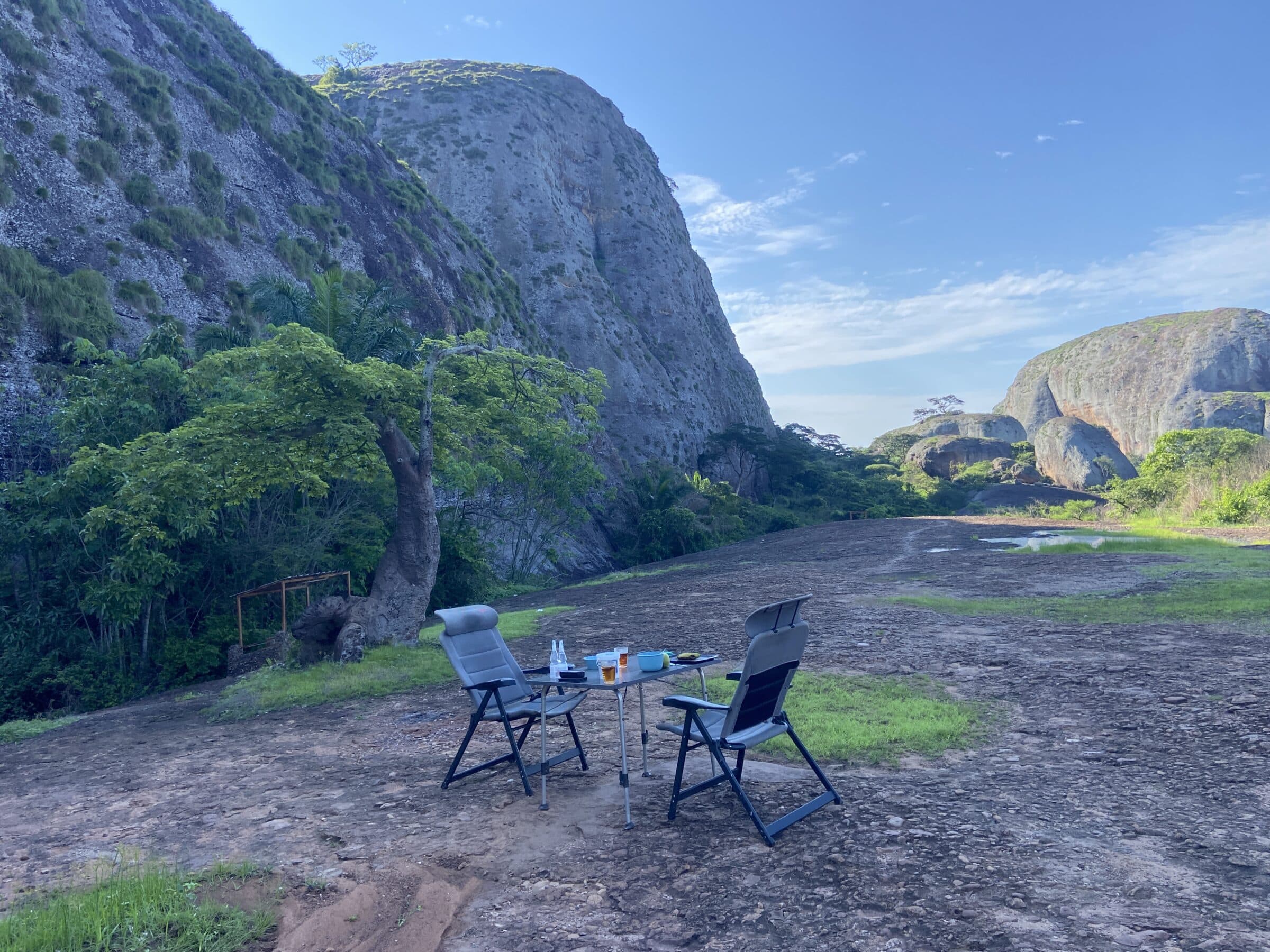
baobabs
We have fallen a little in love with baobab trees, the amazing tree that is common in southern Africa.
We have already seen them in Senegal, but not again on the route through West Africa. Fortunately, we see our favorite tree often again in Angola. The tree grows on dry savannah soils in Africa and is common in Madagascar. It is also a common sight in Australia.
The baobab has an enormous trunk with a circumference of just 20 meters and can live for more than 2000 years.
The thick trunk stores moisture during wet times to survive dry times.
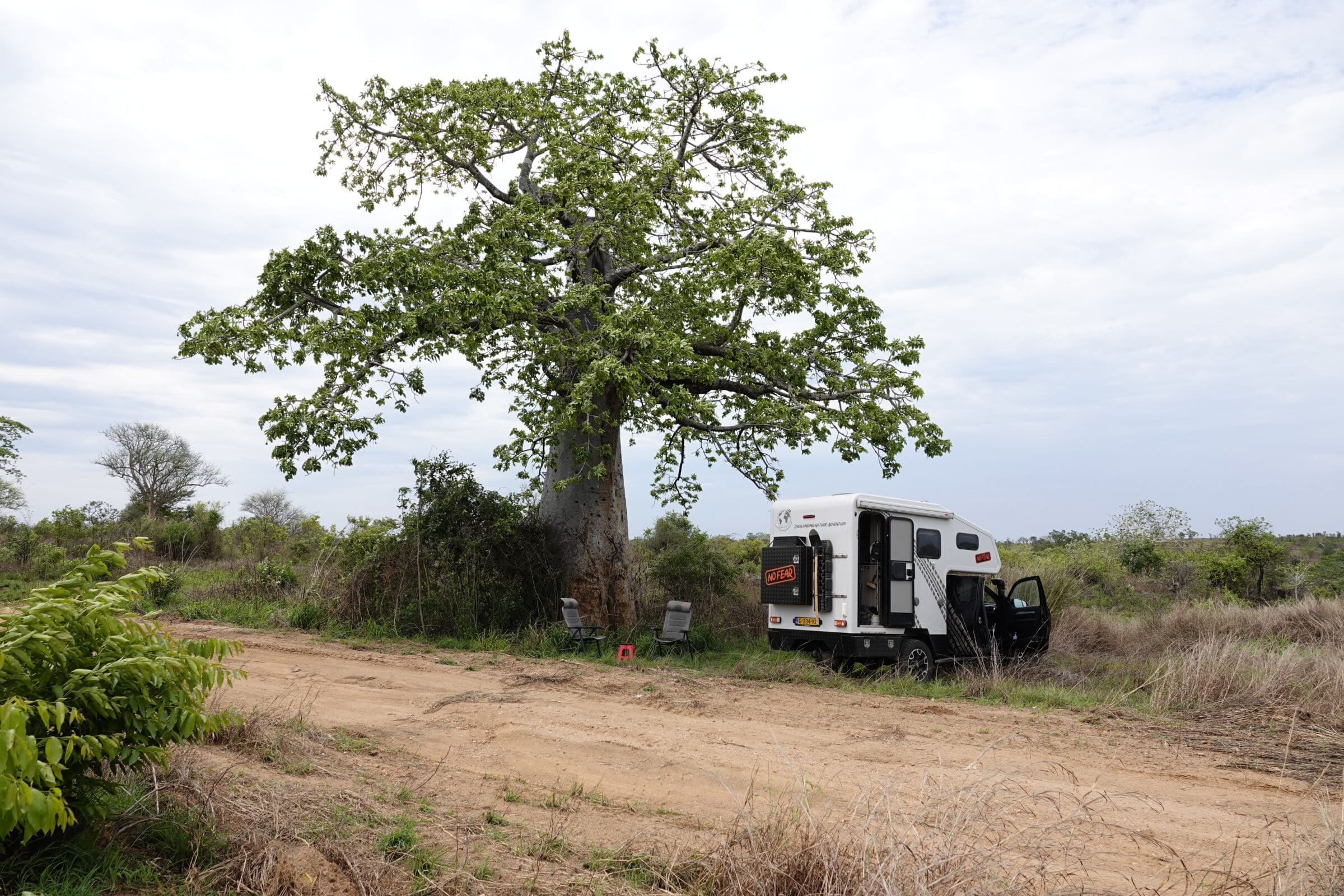
Calandula waterfalls
Waterfalls continue to impress! This waterfall is known as one of the largest in Africa in terms of volume of water. The water falls 400 meters over a length of 105 meters. And that of course provides a huge spectacle.
A hotel has been built at a fantastic viewpoint to the waterfall, where we can spend the night in the parking lot. For next to nothing we can use the sanitary facilities in a hotel room and use the beautiful swimming pool from where we have a view of the waterfalls. We take a walk through dense vegetation, over rocks along the top of the waterfall. We see many special places with beautiful views. We can also bathe in the “natural swimming pools” here. Most people stay at the hotel and don't bother to look here, even though it makes us "the happiest people on earth".
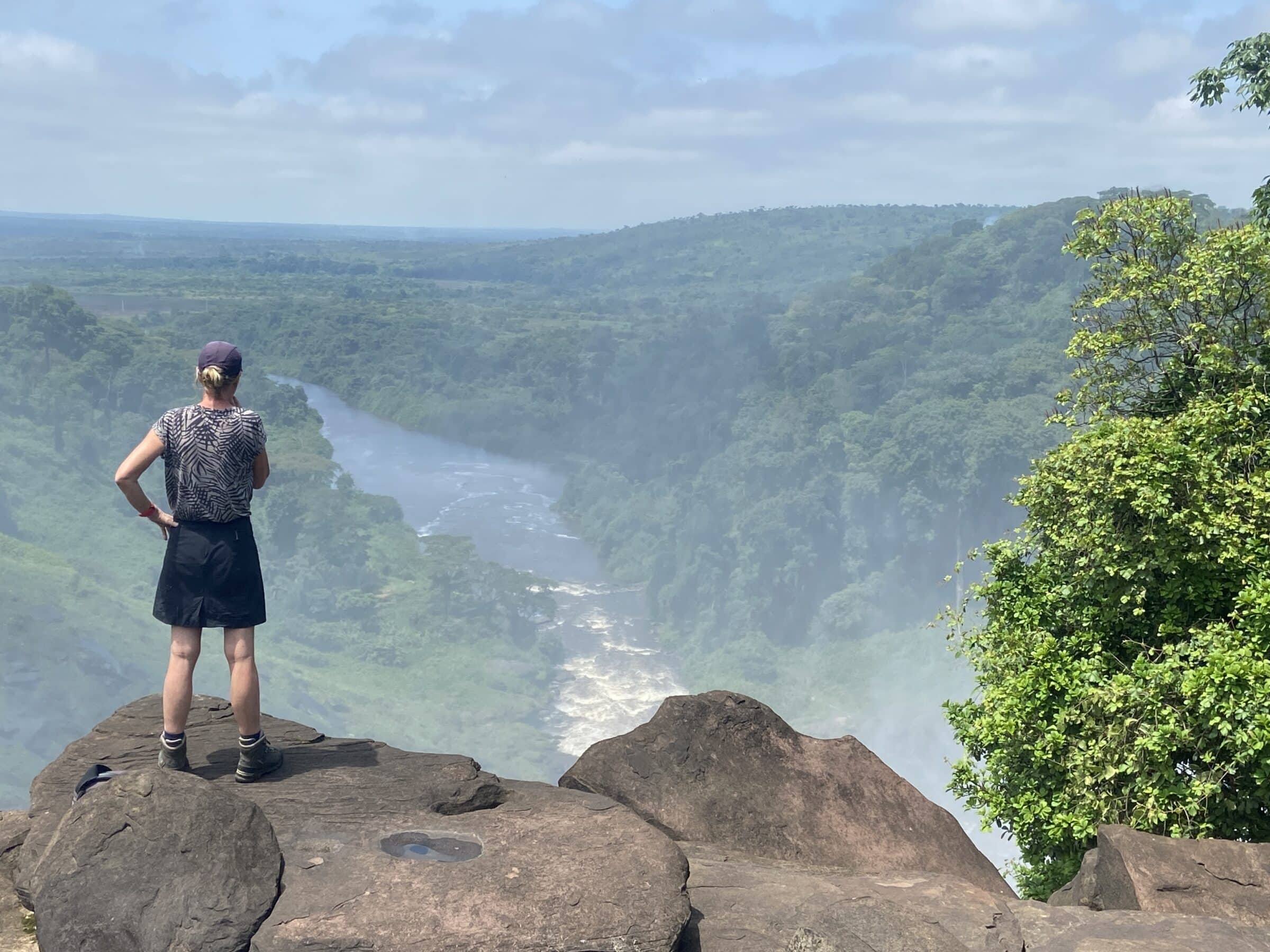
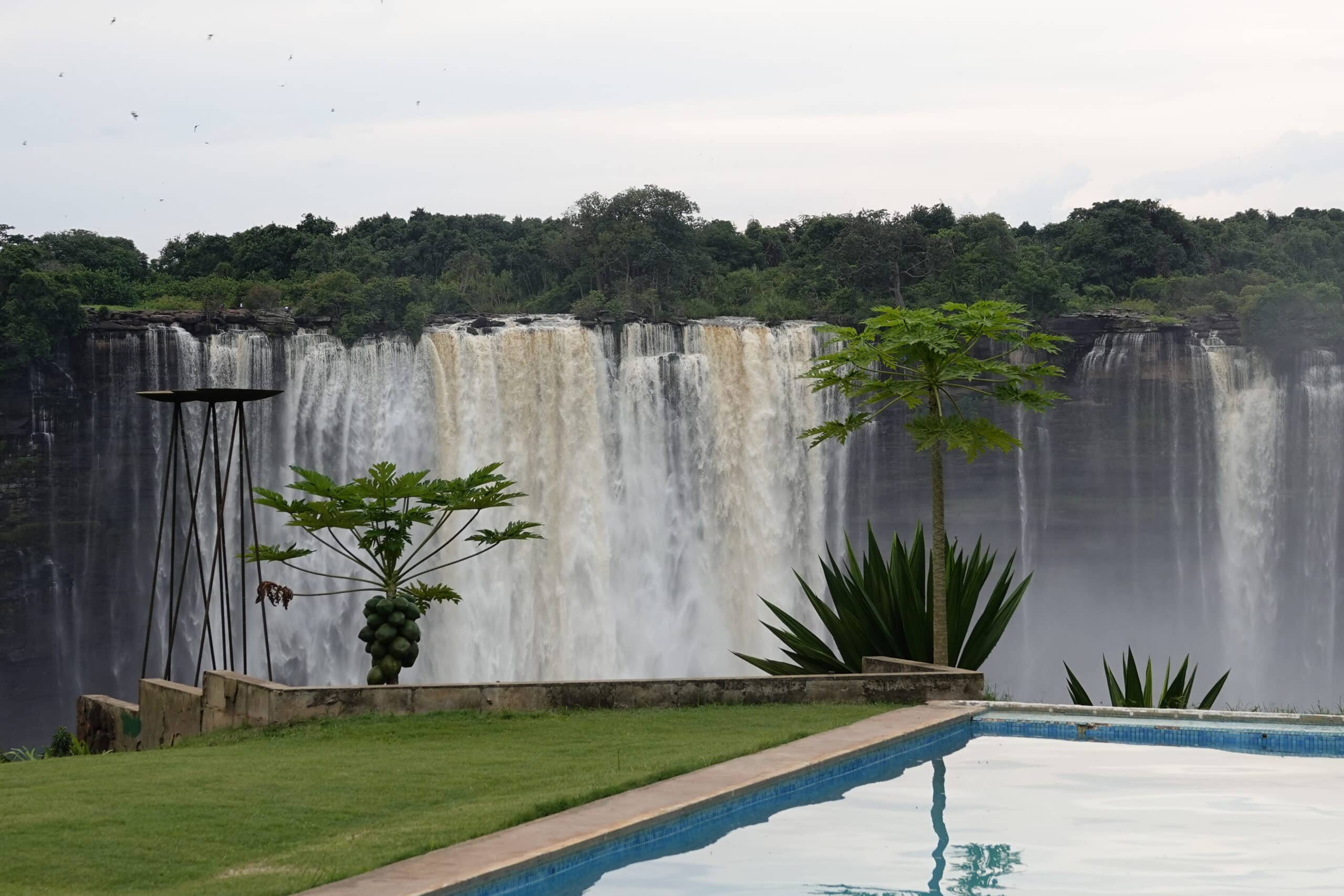
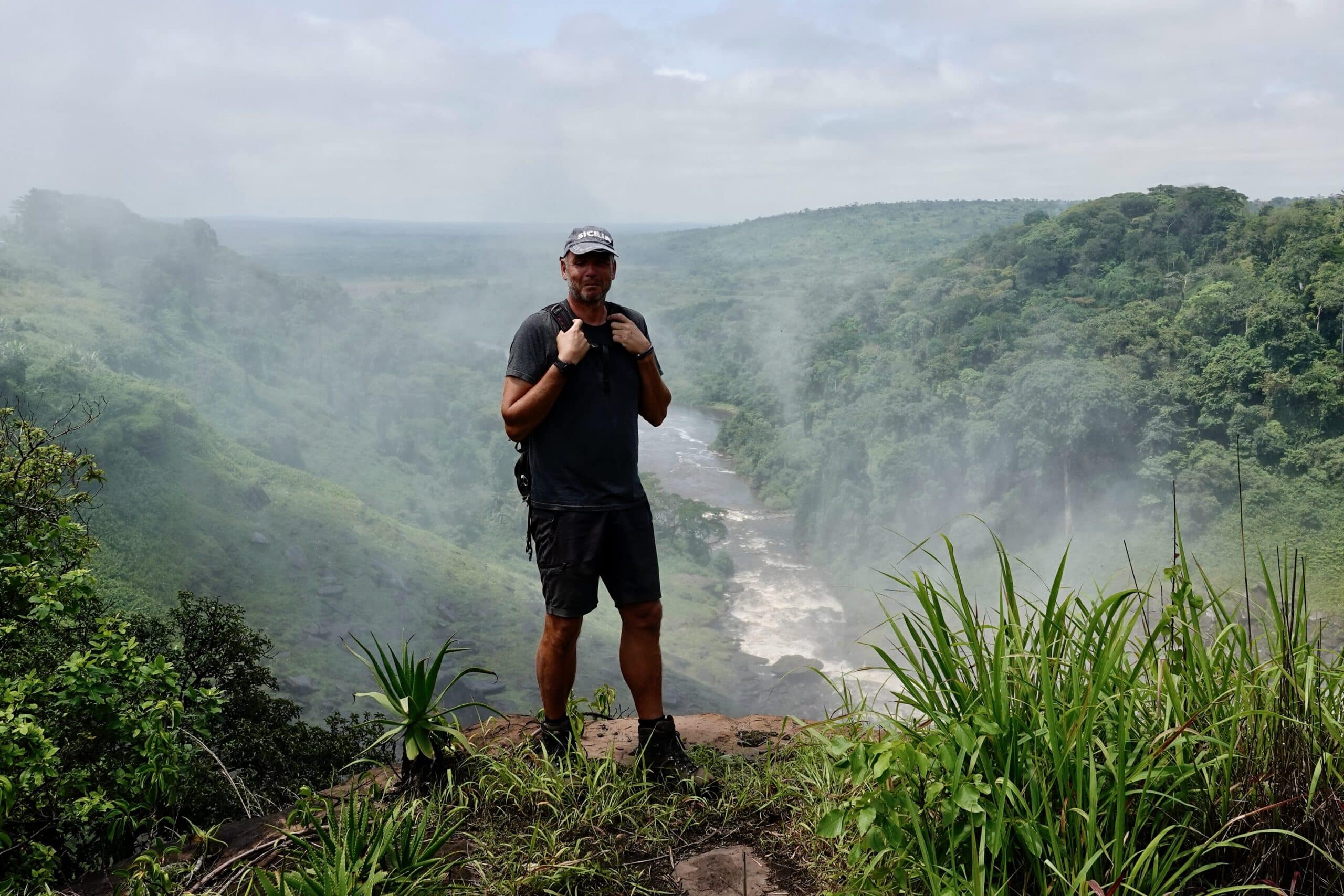
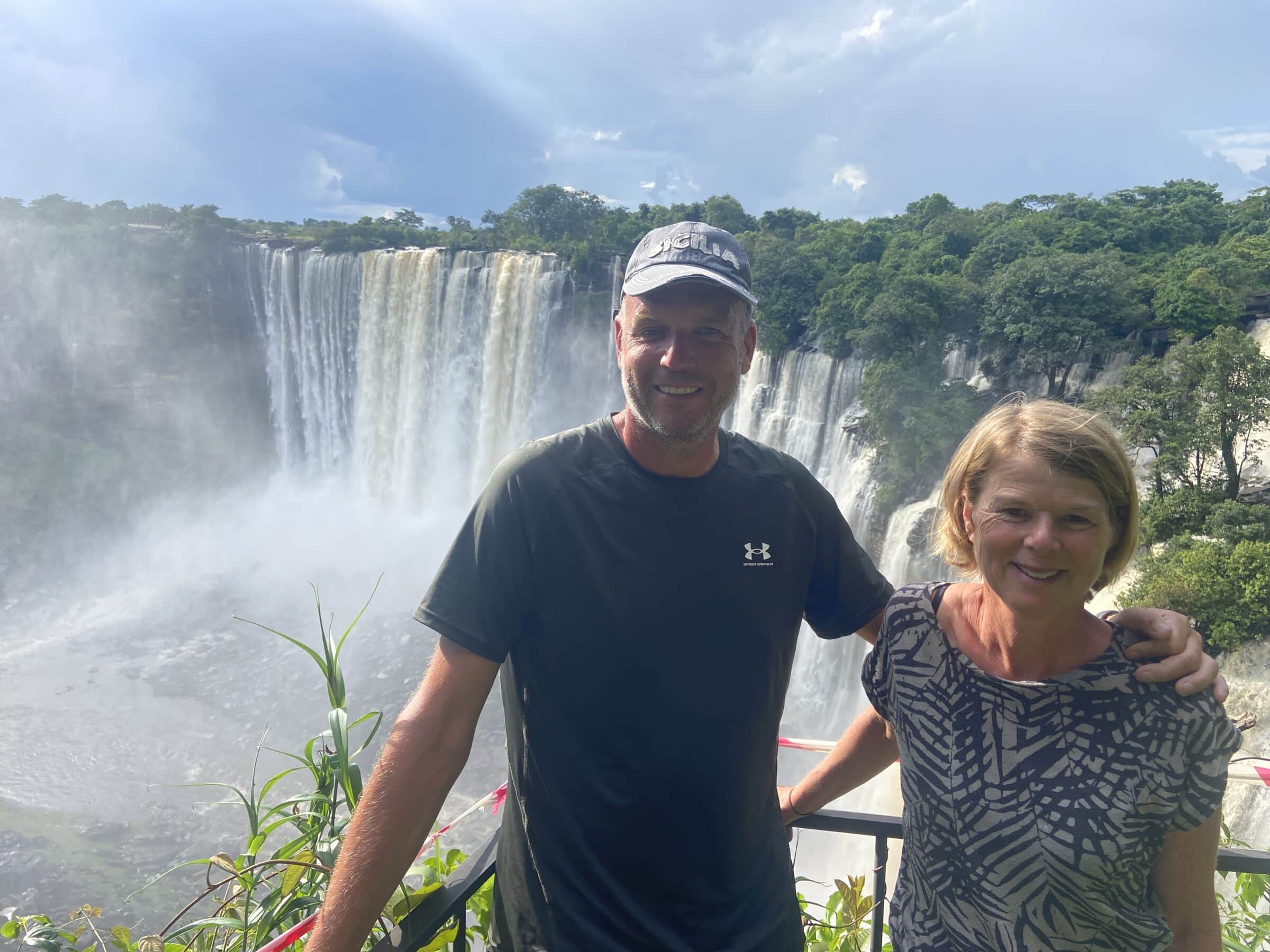
Safari in the national parks
We know that the national parks in Angola are not all accessible, but we still make an effort. In this national park it is possible to see the Giant Sable Antelope (Palanka). This unique antelope can only be seen in this area. A latest count shows that about 300 still live here.
The road there is challenging in places due to deep ruts and sometimes slippery clay. Finally we reach the entrance of the park. To our great surprise there is a whole village with about fifty houses. We didn't expect that here in the middle of nowhere
The people, like many small hamlets in Angola, live largely self-sufficiently.
Anyway, at the entrance to the park we soon find out that a safari is impossible. The rangers present tell us that the safari truck is being serviced and it is much too far to walk. However, we can spend the night in a unique place in good company with the gentlemen.
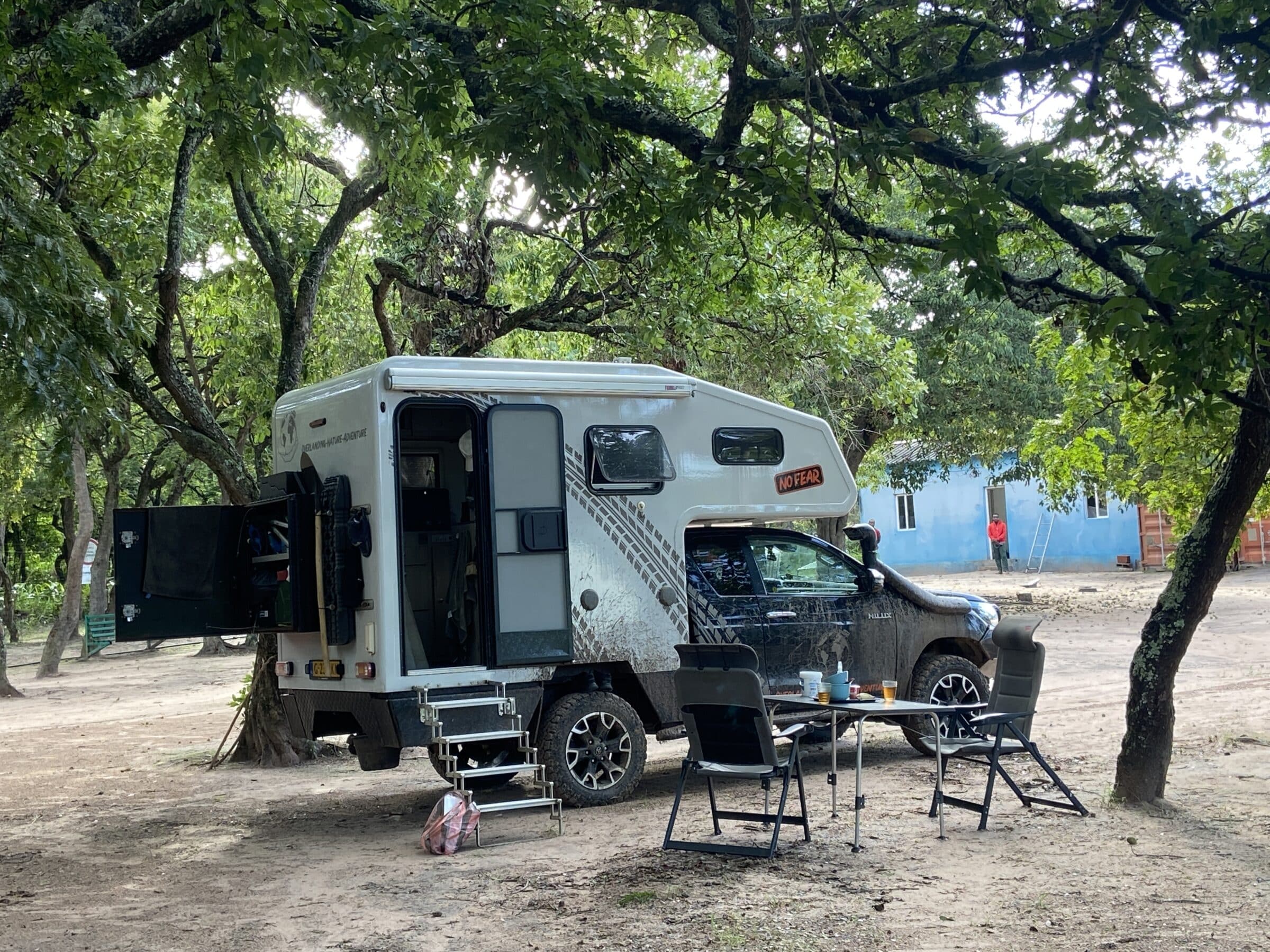
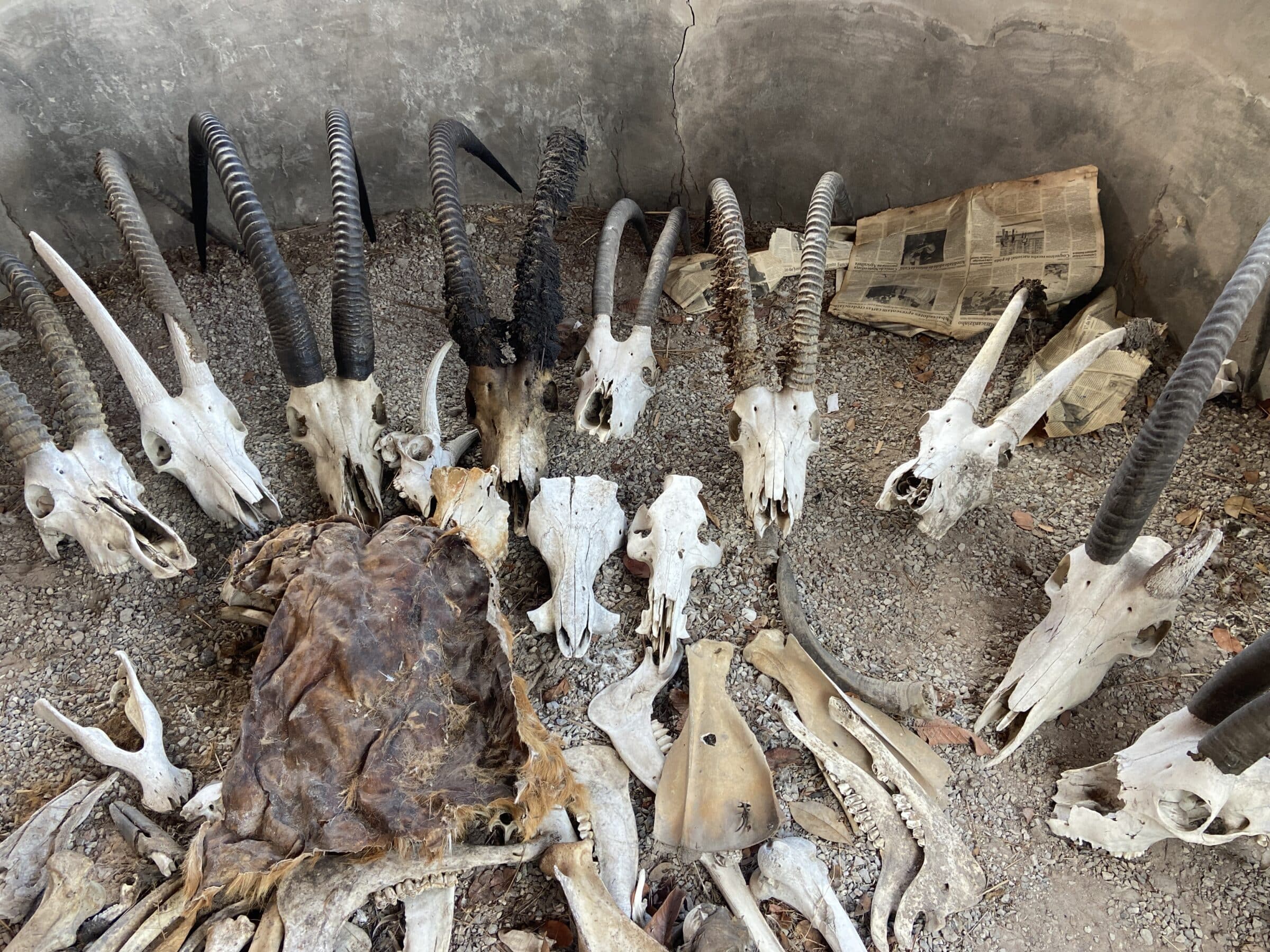
Continued in part 2
Plan your holiday to Africa here
- Itineraries you can compare + request quotes Africaplus, Africa tailor-made, Djoser, king monkey, rickshaw travel, sawadee en shoestring.
- Flight tickets for Africa you book through Skyscanner.
- Hostels, Hotels and Resorts in Africa you book Booking.com.
- Rental cars : Sunnycars en rental cars.
- Tours and Activities in Africa you book through GetYourGuide.
- travel items such as suitcases, bags and more you can buy at Bol.com.
- SIM cards for Africa you buy extra International sim.
- Parking at the airport you can arrange via Parkos, park care of iParking.


